From the early days of photography when Robert Hunt captured the Blue Gum Forest in 1859 during a survey of the Grose Valley for a railway line. Another attack of progress on the wild places which fortunately failed. Harry Phillips from 1873 -1944 produced 100,000 copies of his book “Blue Mountains Wonderland 81 Views” which must have inspired many people. Contemporary photographers among them friends Ian Brown, Henry Gold and Rob Jung as well as Leo Meier produce outstanding images for books, magazines, periodicals and conservation articles. The aesthetic viewpoint is central to conservation campaigns such as the Colong Campaign, the Wollemi National Park, Gardens of Stone and the Blue Mountains for World Heritage Campaign.
Many benefit from the works of a few. Myles Dunphy who I knew, once said of this place, “Great peaks noble in their grandeur, arose above all, the hubs about which the ridges and the rivers were ordered. I was amazed with the wonder.” Truly he had a Sense of Wonder, of the Blue Mountains. But as we look back from this Wild Place we can see the edges of our so called civilization, the urban creep along the ridges and cliff tops, the smoke and noise, and at night the increasing brightness of the city lights to the east. It is ever more important to look after this place in the face of the irreversible changes wrought by the blind rush for progress . The wild places have a breaking point and can sustain only so many humans.
What it means to camp in the Blue Gum Forest
Most of the trees in the Forest are Mountain Blue Gum, Eucalyptus deanei, also known as Round-leaved Gum.
They grow to over 70 metres and may live to over 1000 years.
They are one of about 100 species
of eucalypts which occur in the Greater Blue Mountains World Heritage Area.

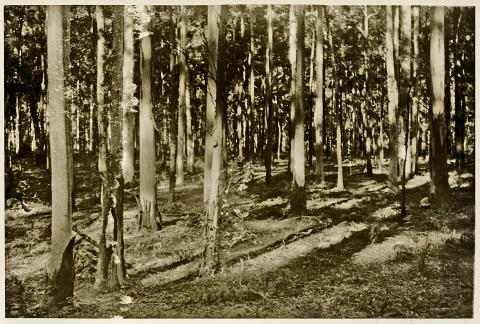
Views of the blue gums in 1930.
It is the country of the Darug people.
They knew the passes in and out of the valley.
Bushwalkers in the Blue Gum Forest in 1930.
At Easter 1931 a party from the Sydney Bush Walkers and Mountain Trails clubs walked from Govetts Leap and camped in the forest.
They were led by Alan Rigby, a photographer.
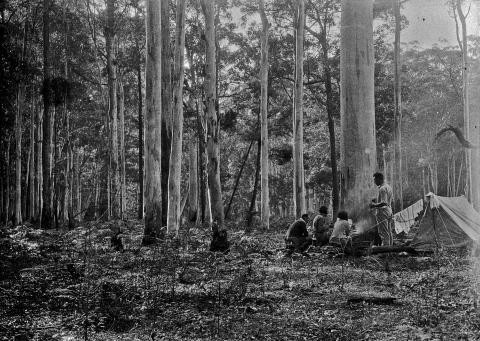
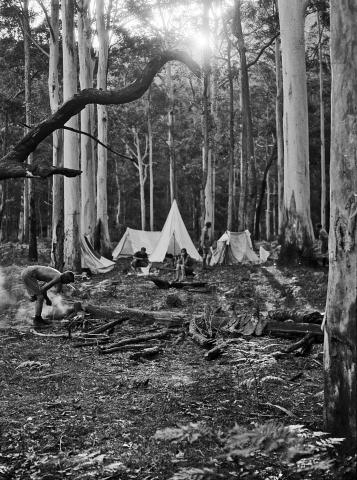
The original tents.
The bushwalkers were horrified when Hungerford told them he planned to cut down the blue gums.
They formed a committee to stop him.
After appealing unsuccessfully to the authorities, they arranged to meet Hungerford in the forest, to negotiate a deal.
Party of Blackheath people at the Forest in 1910
[G. Bates collection]
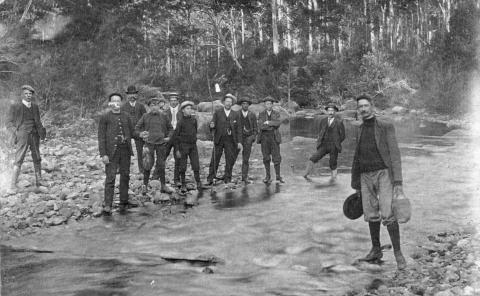
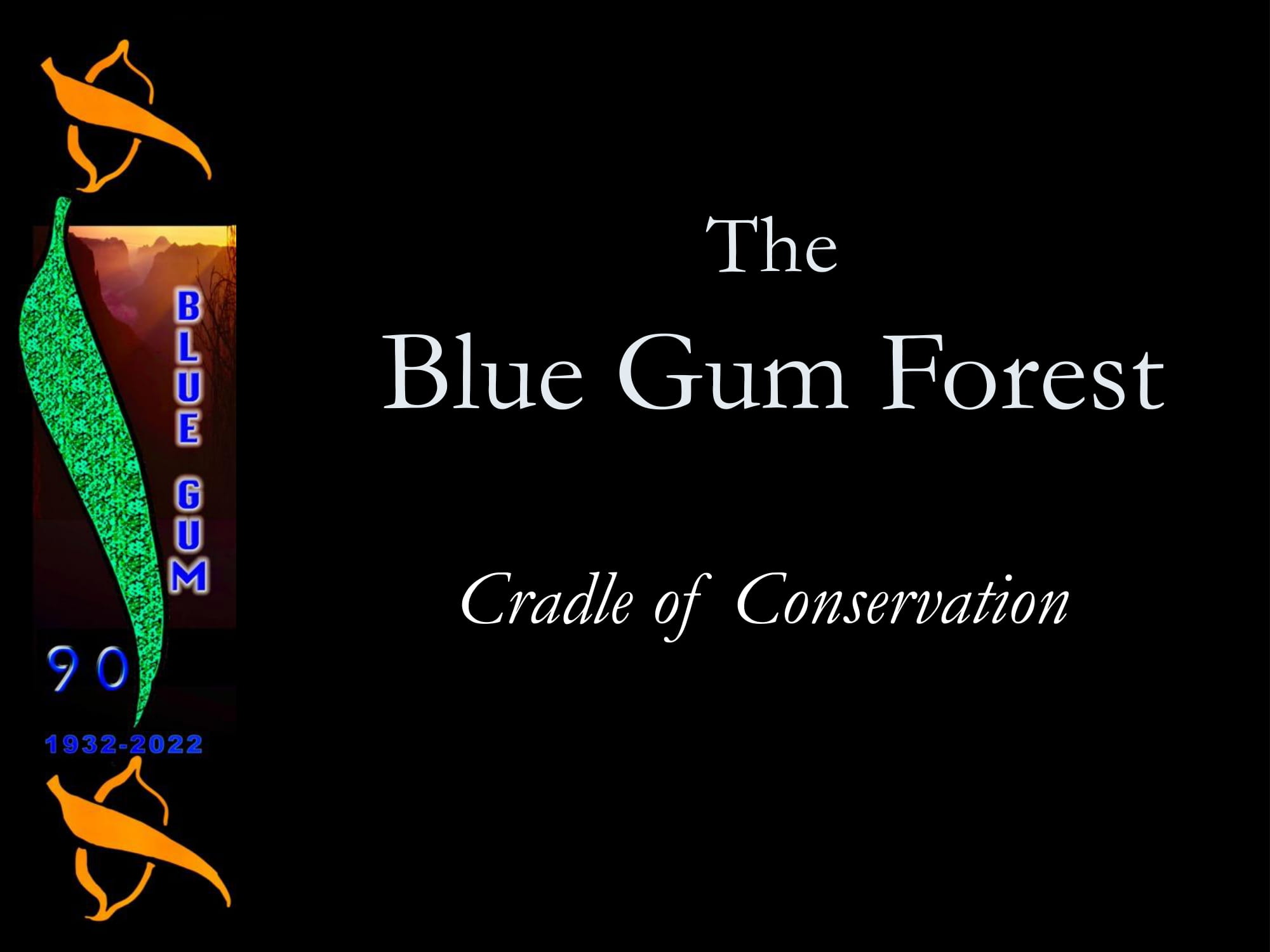
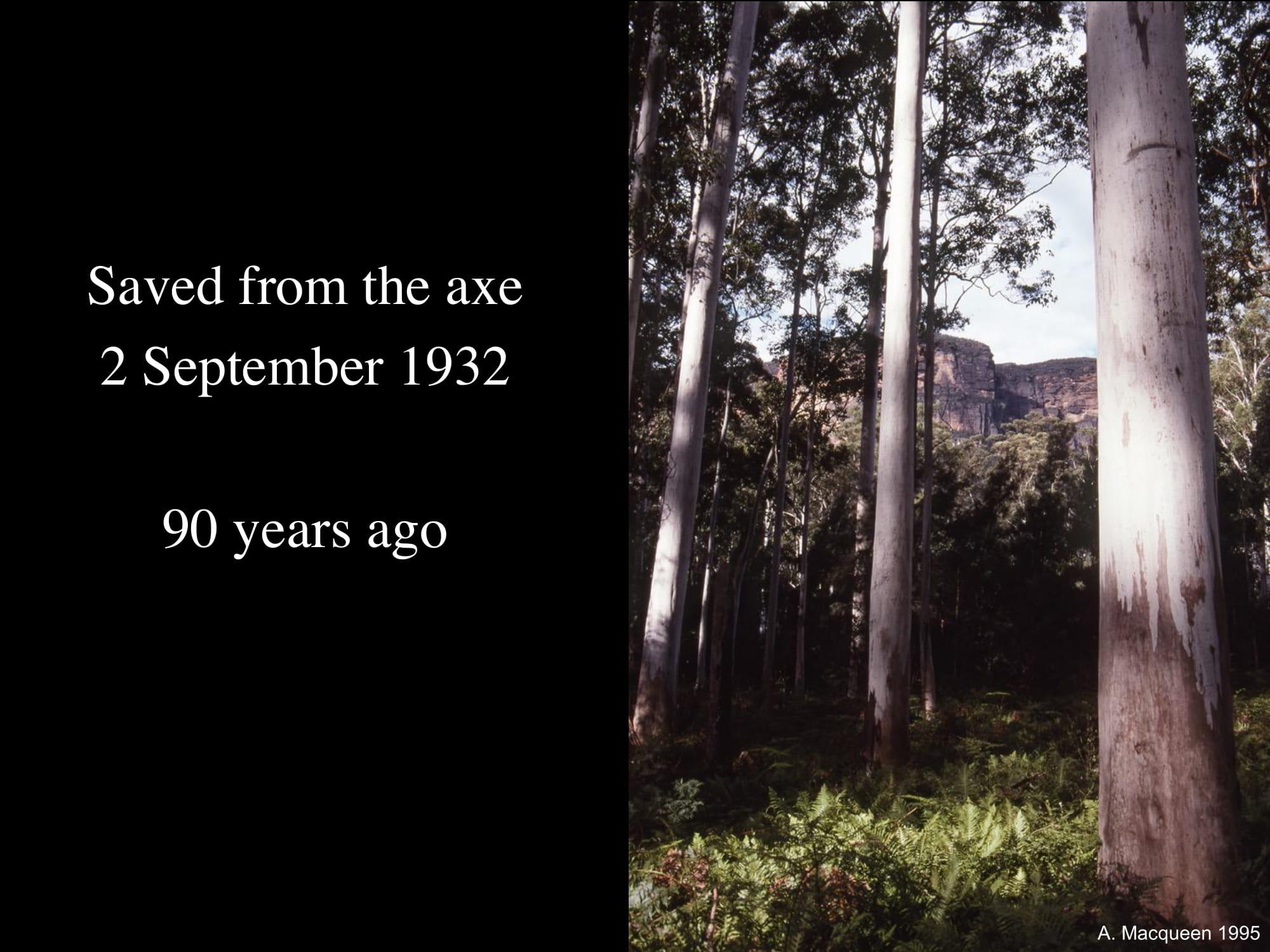
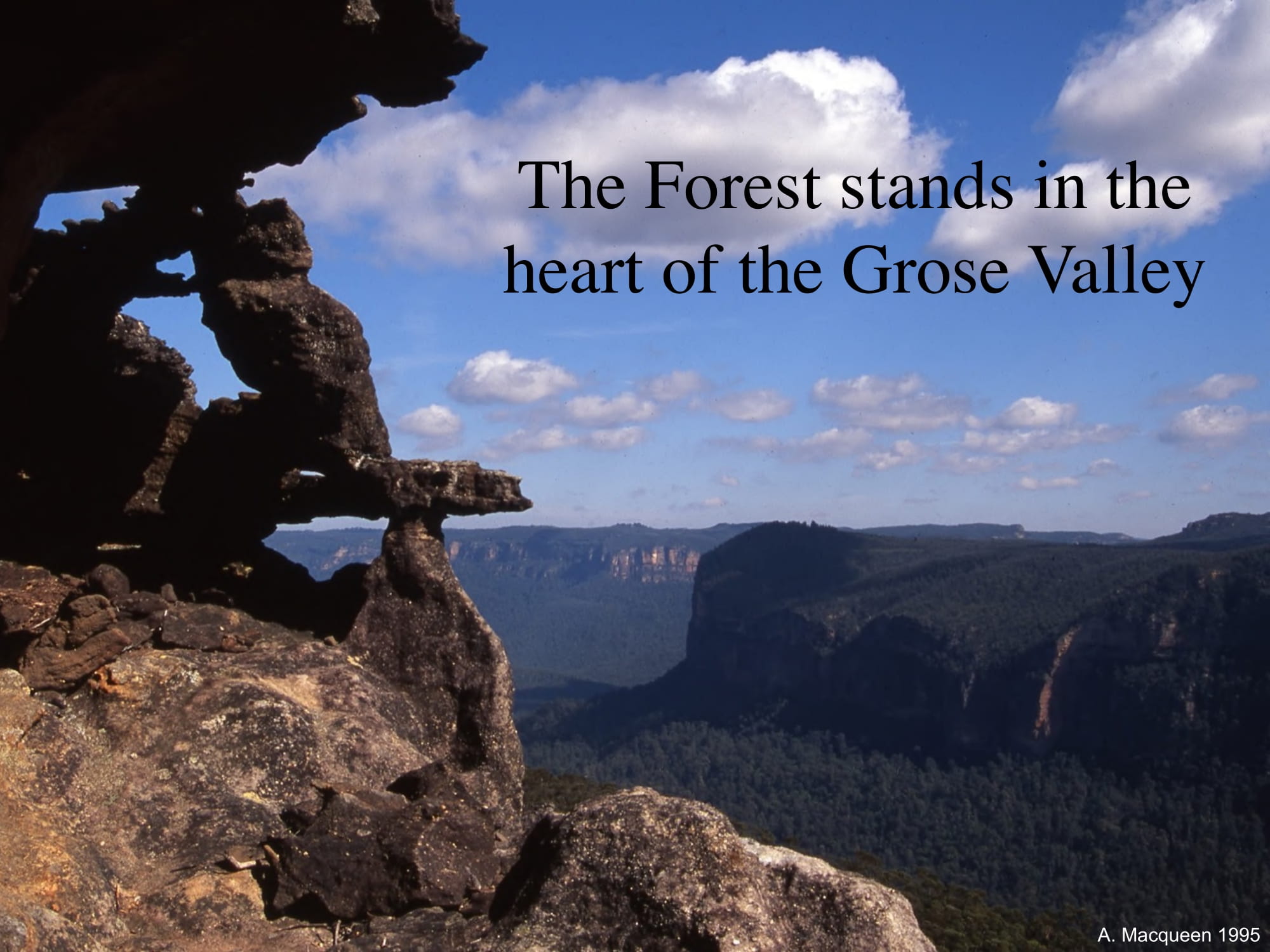

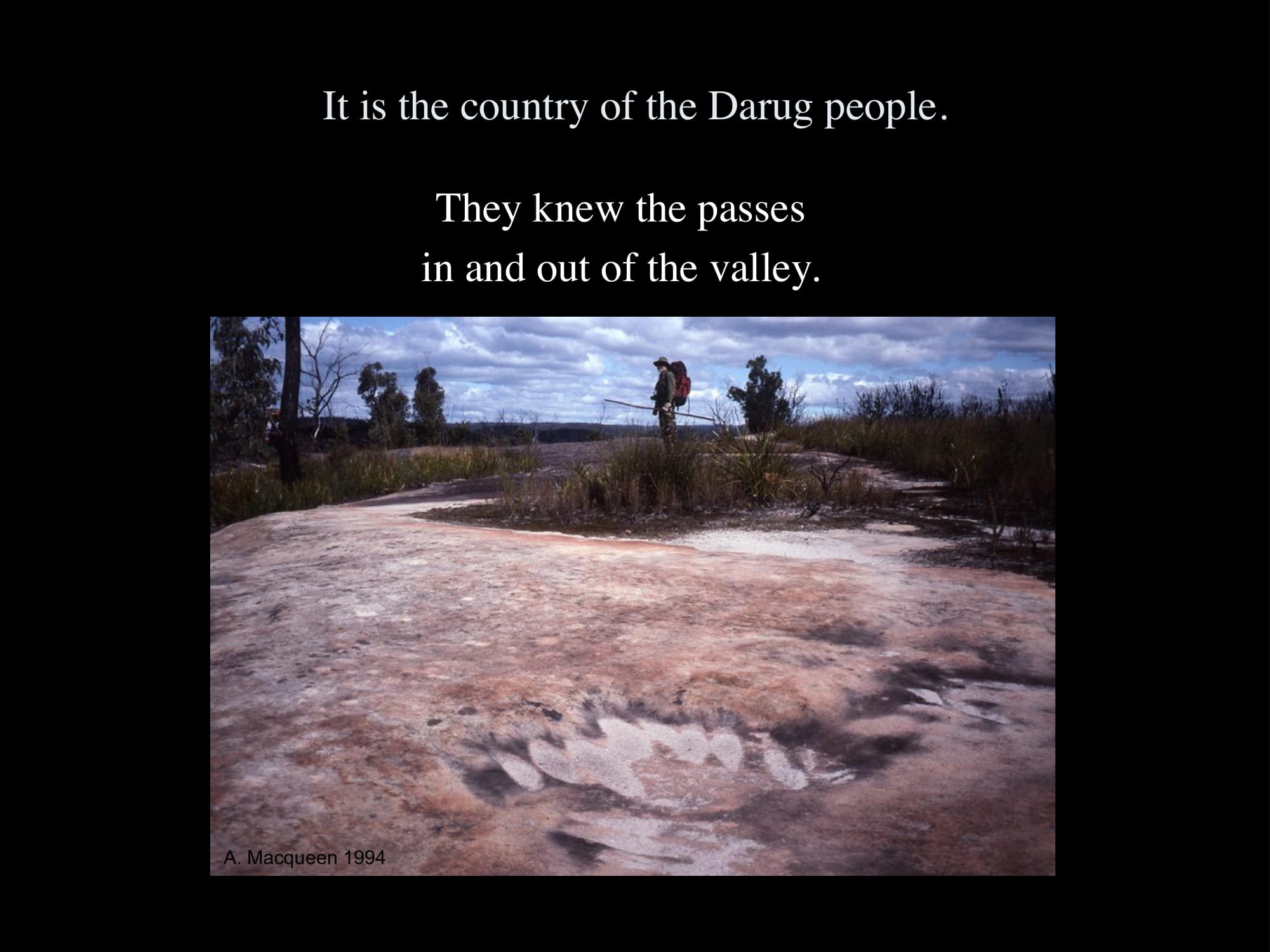
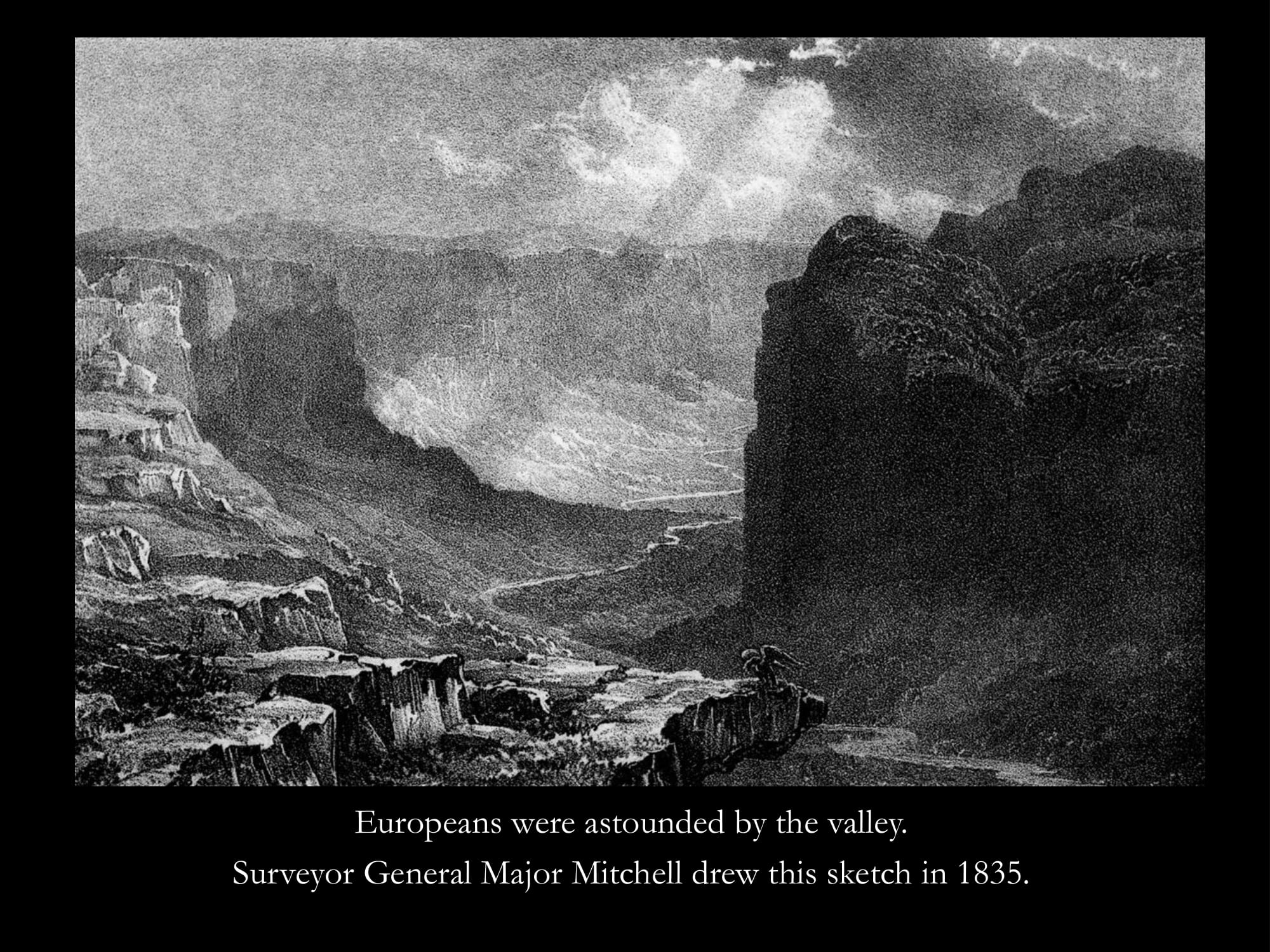
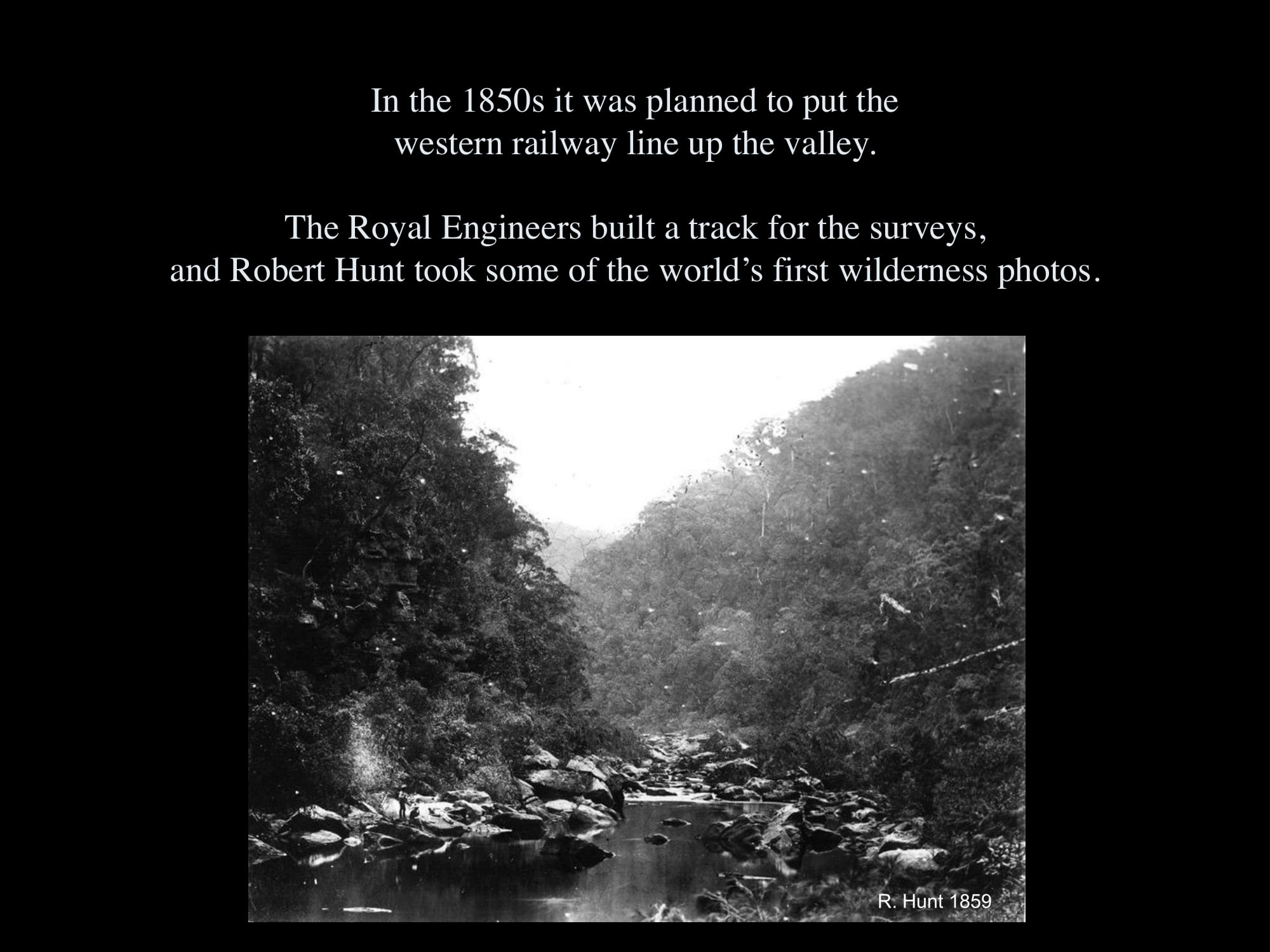
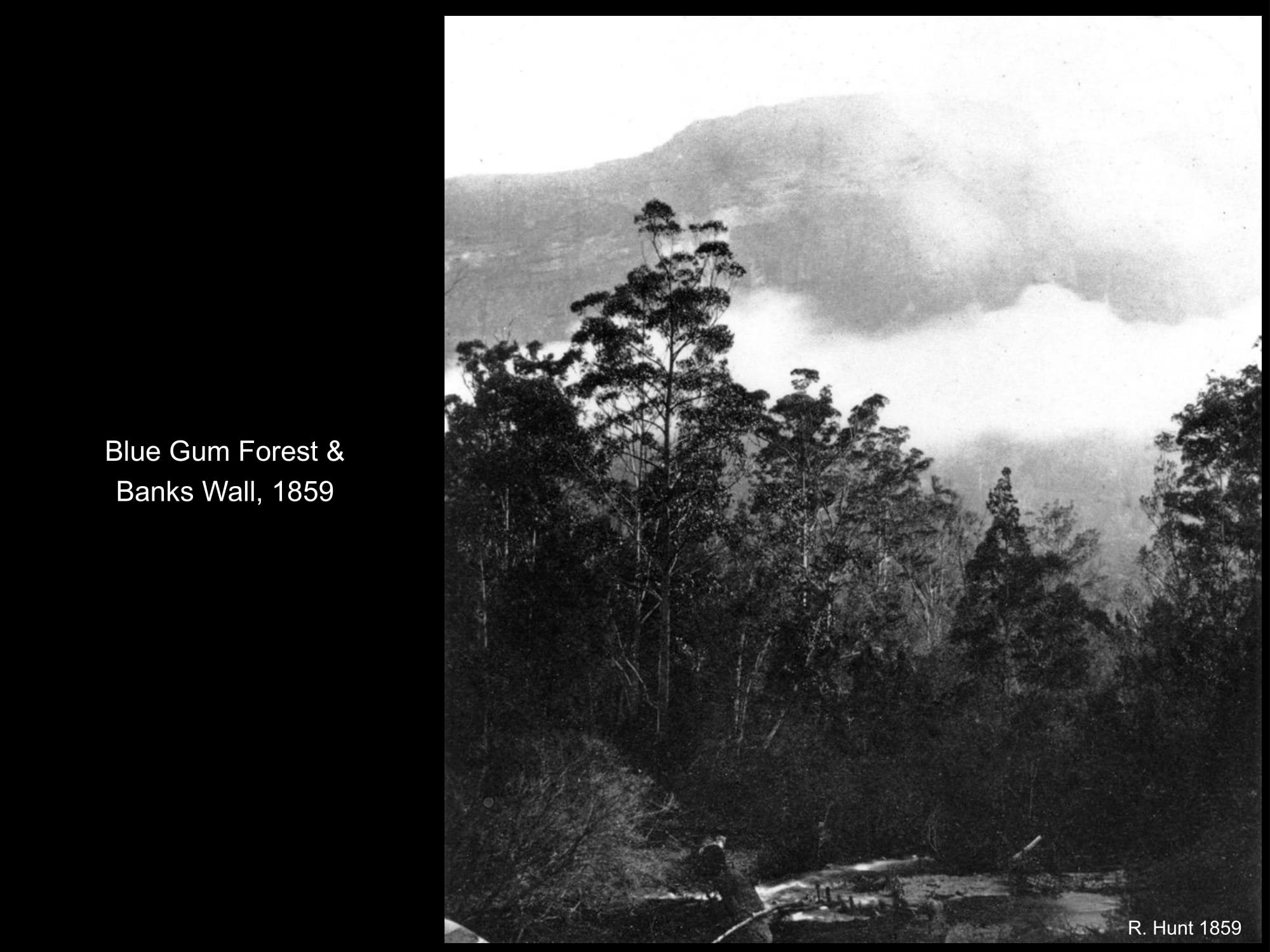
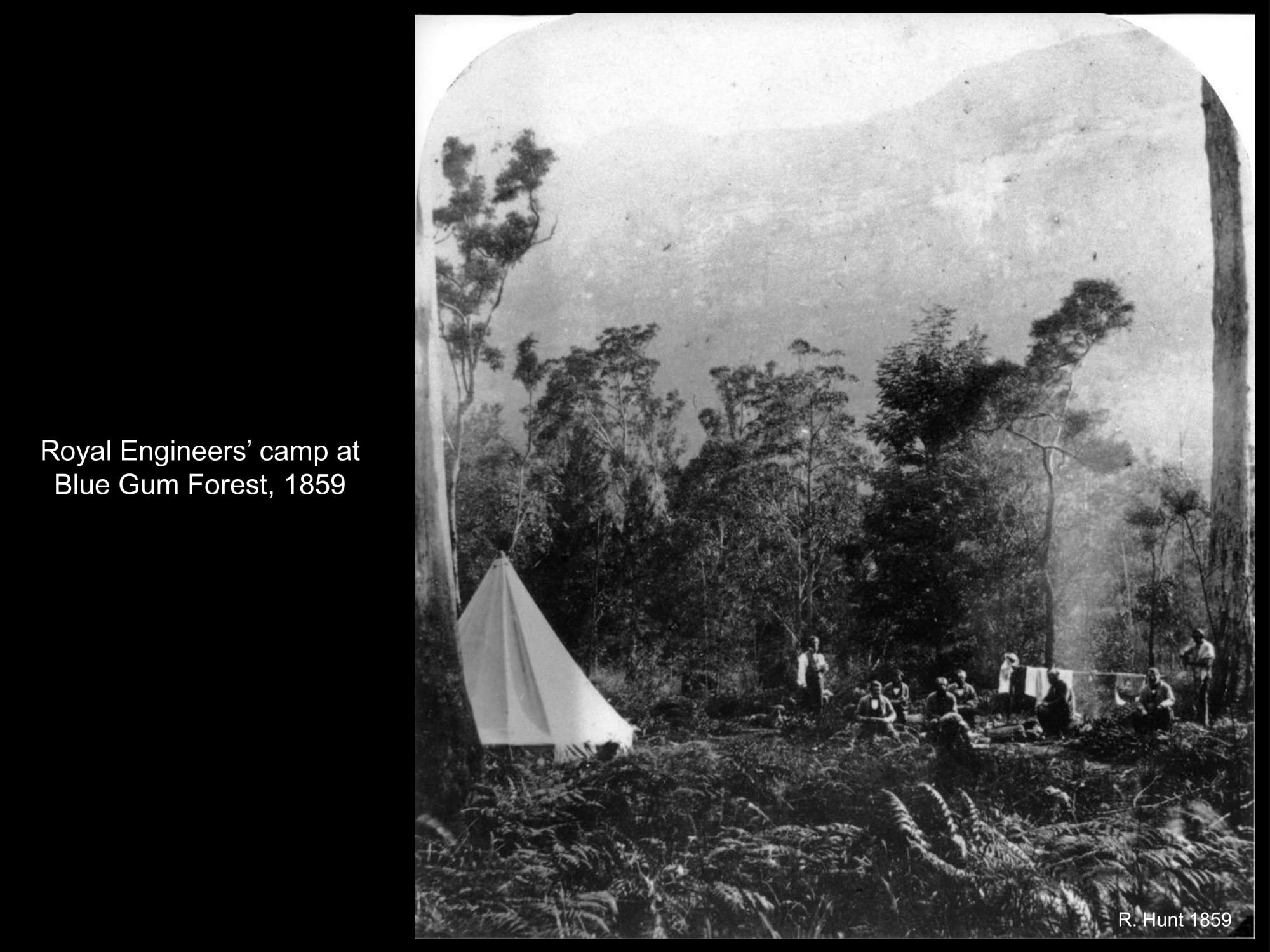
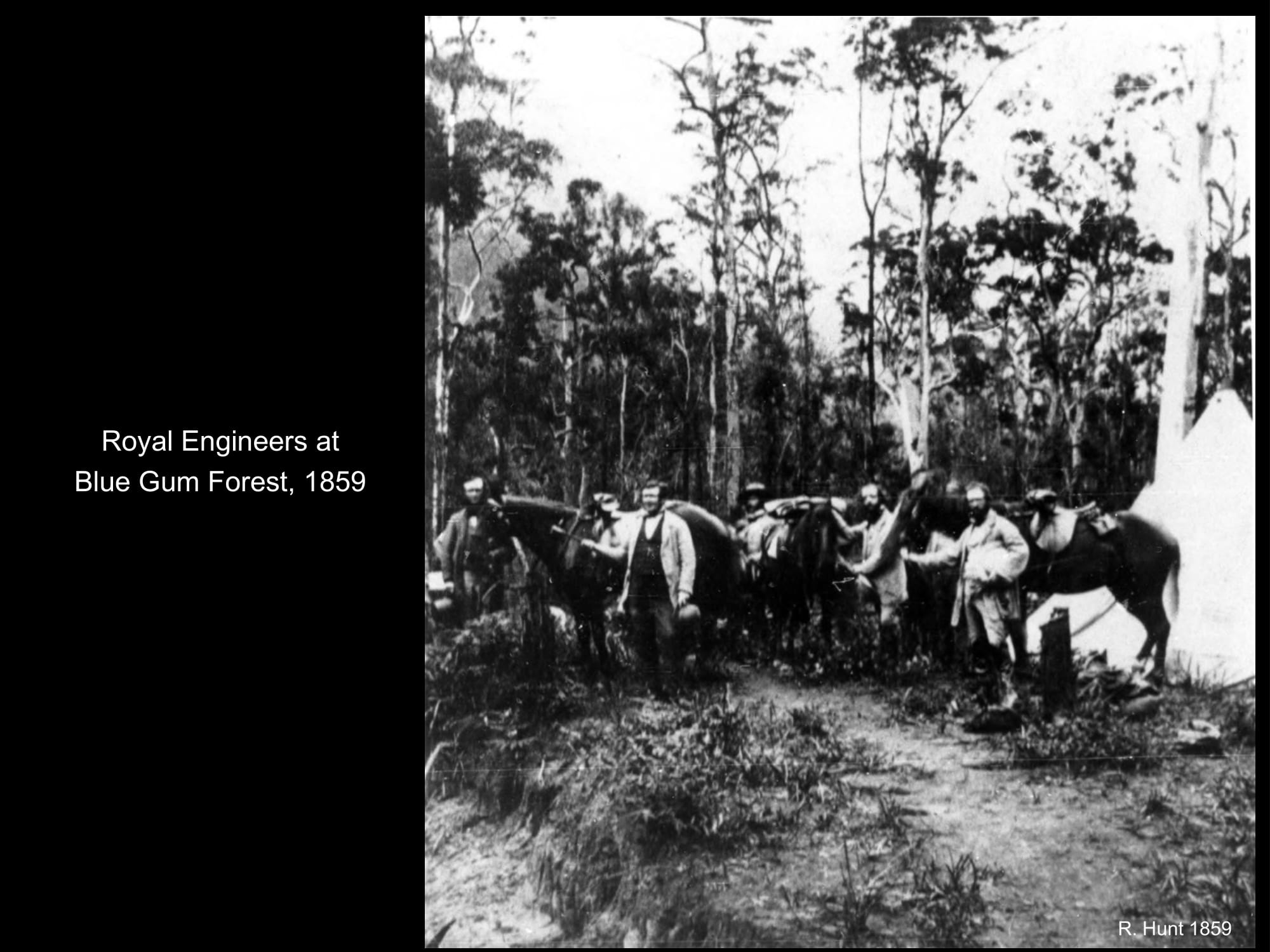
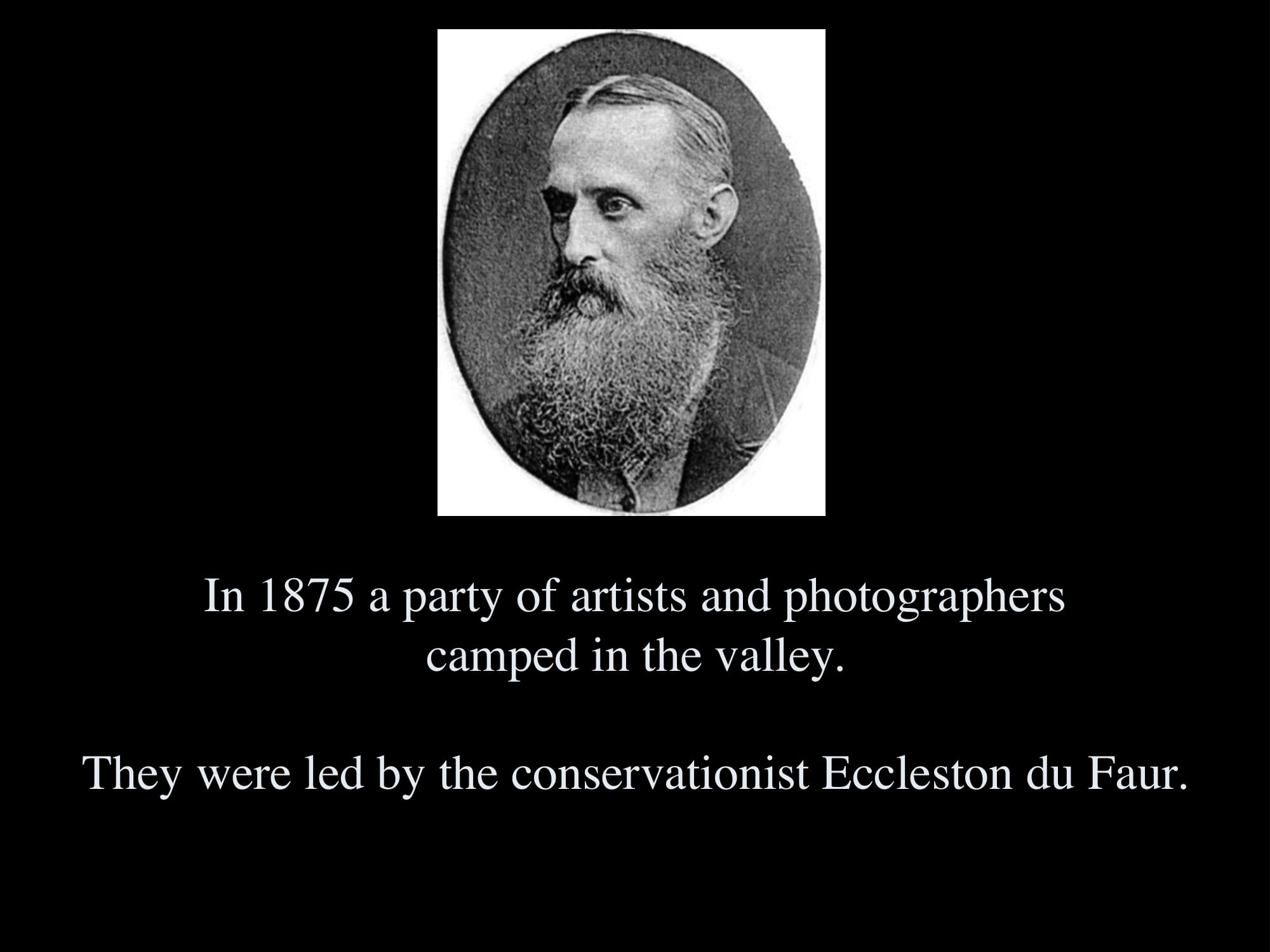
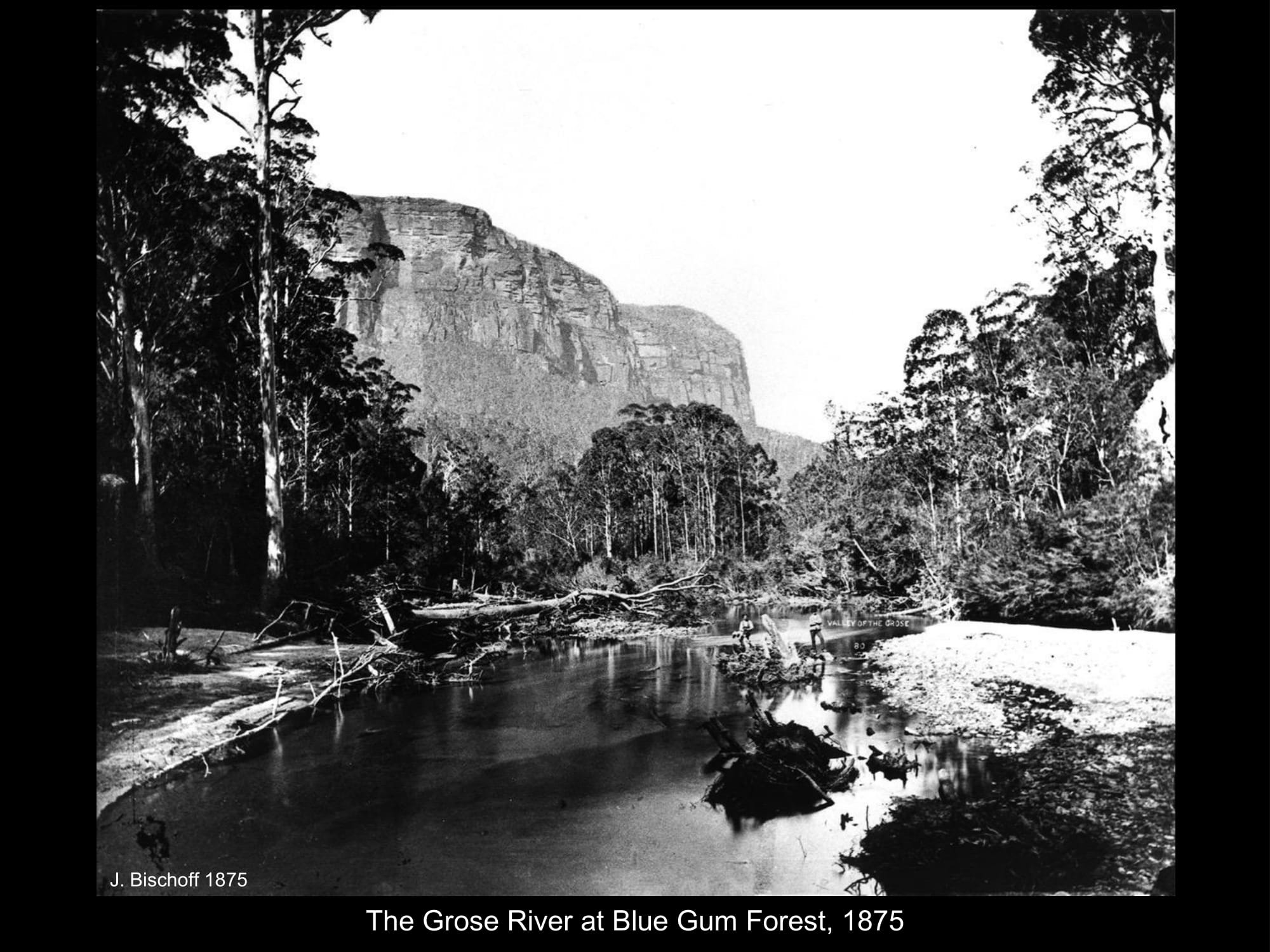
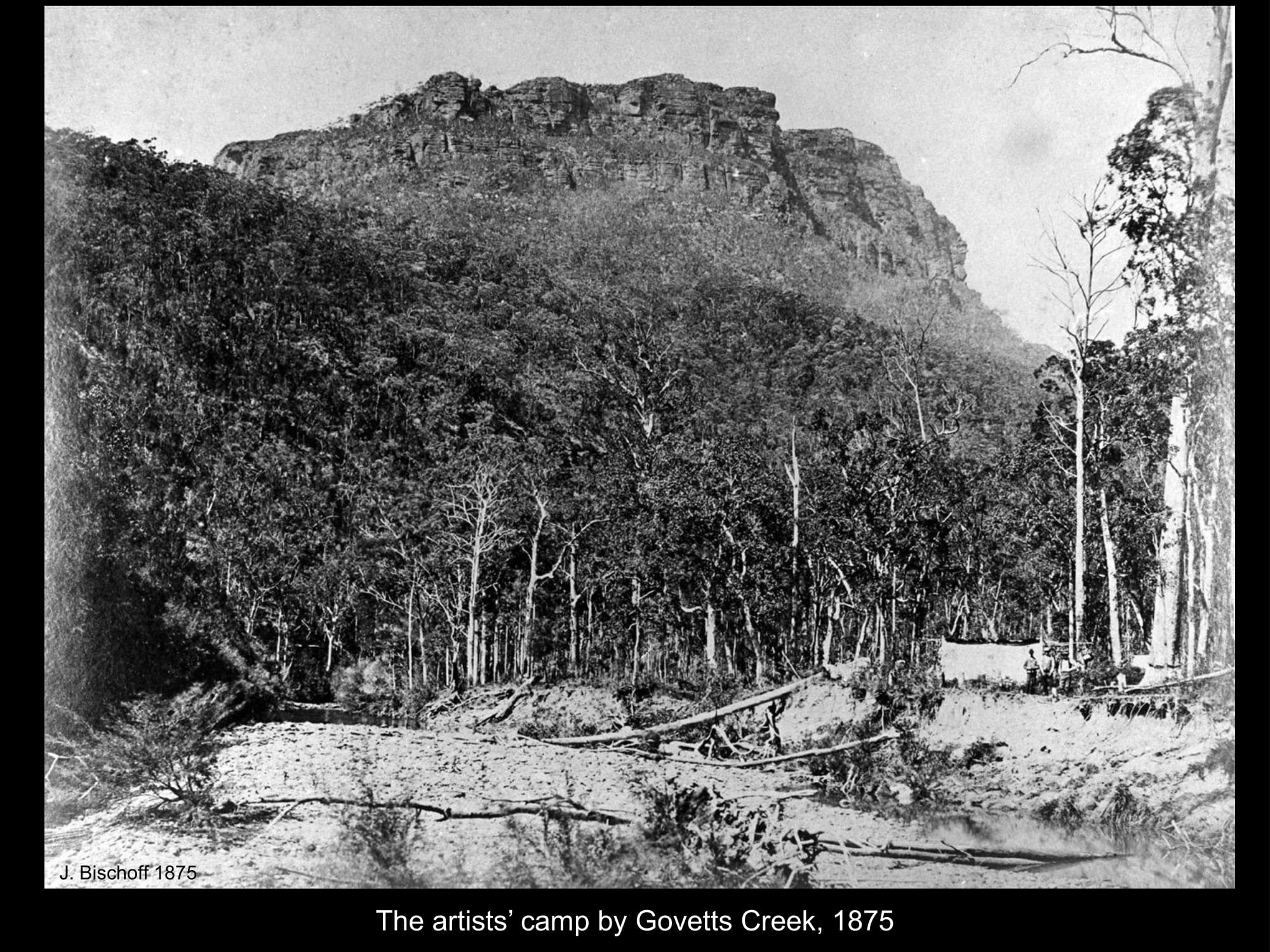
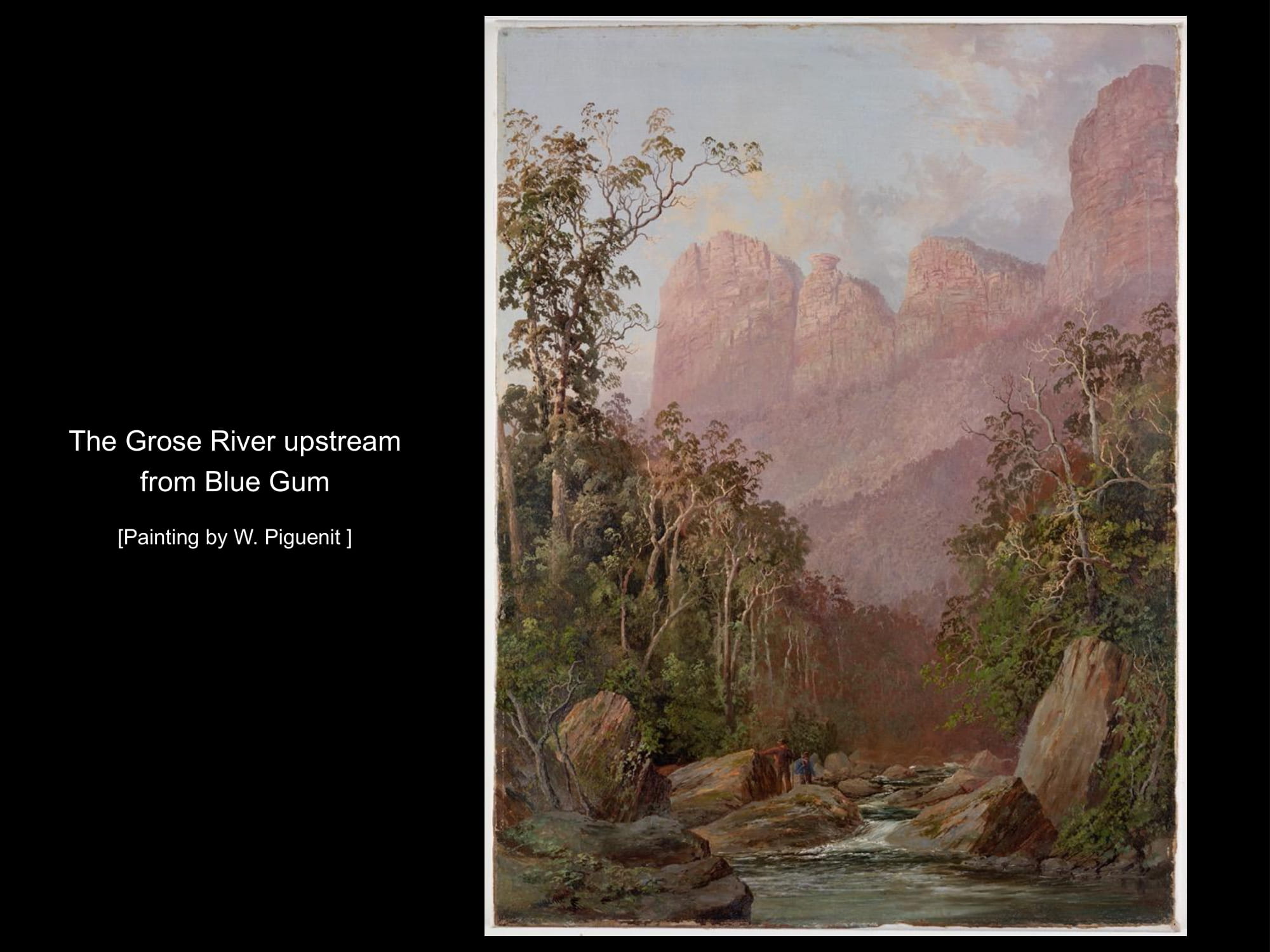
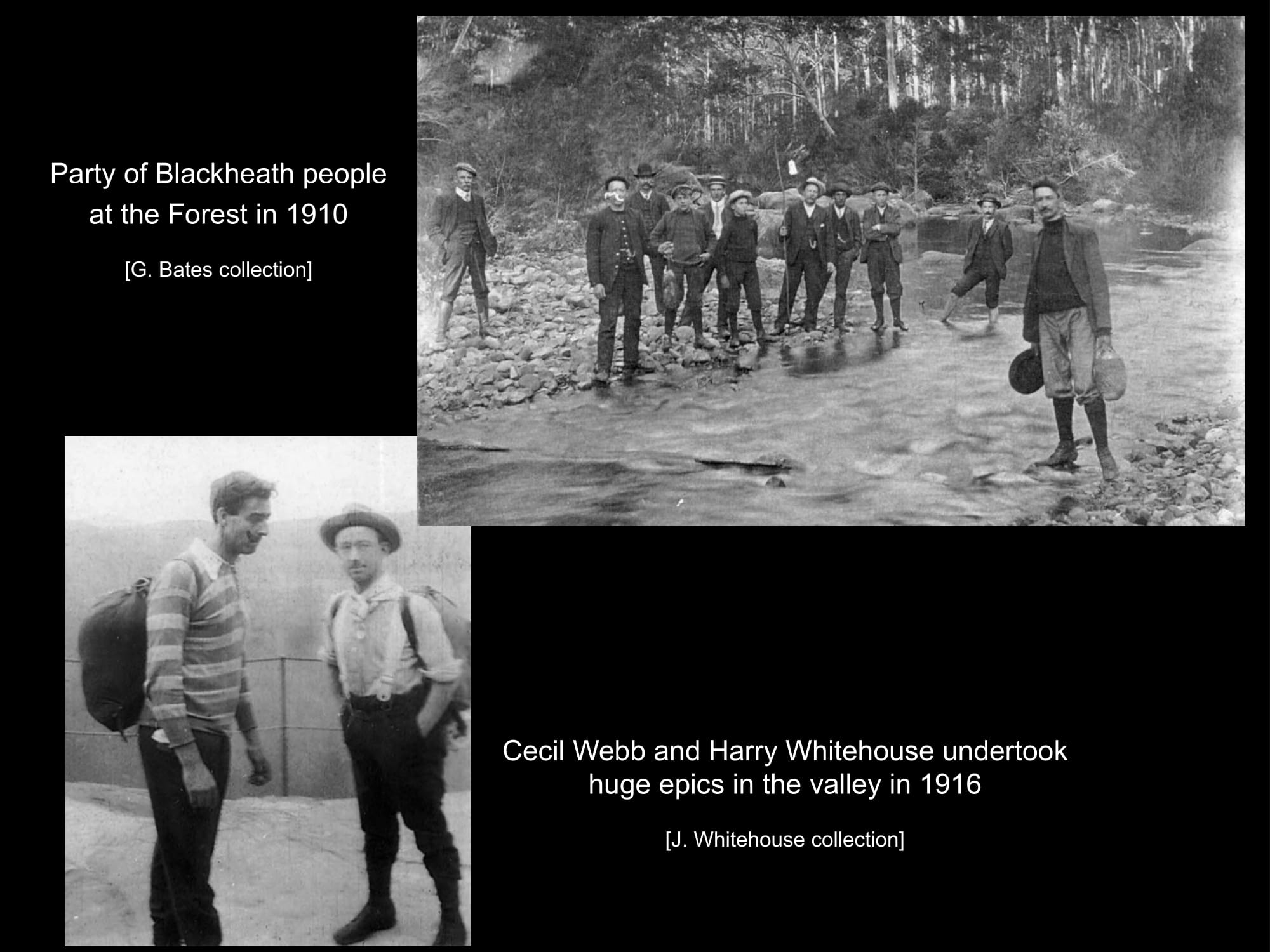
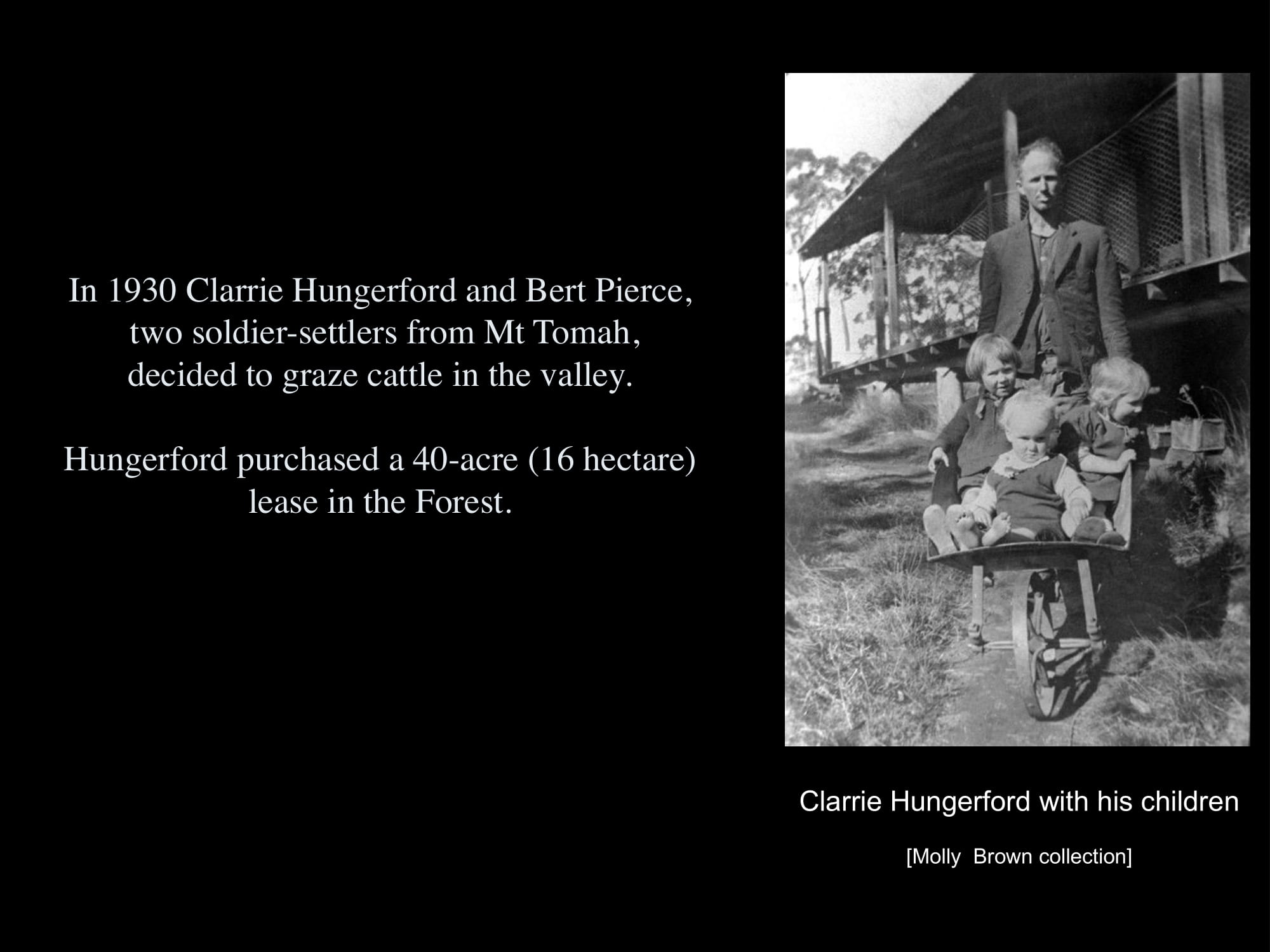
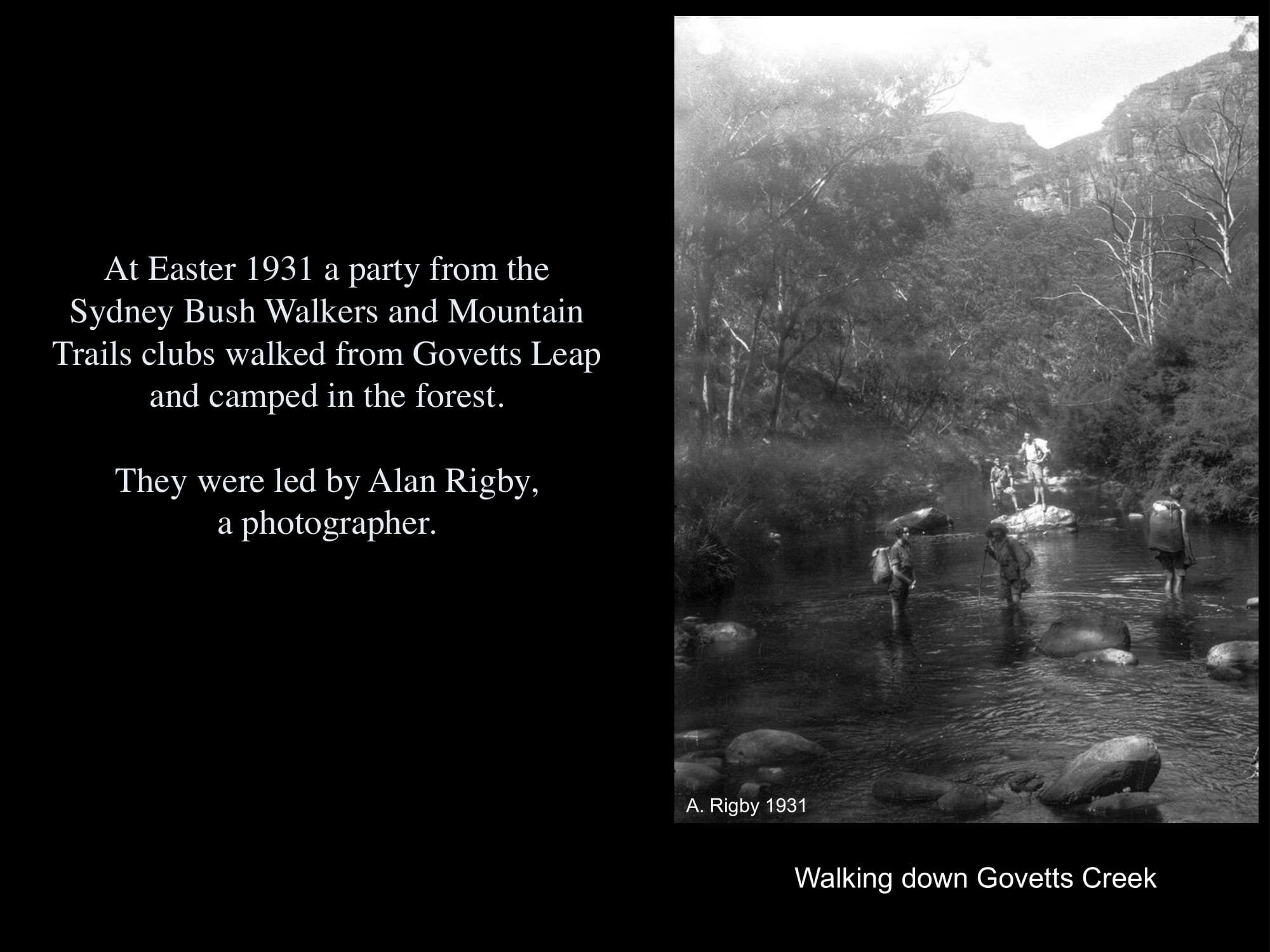
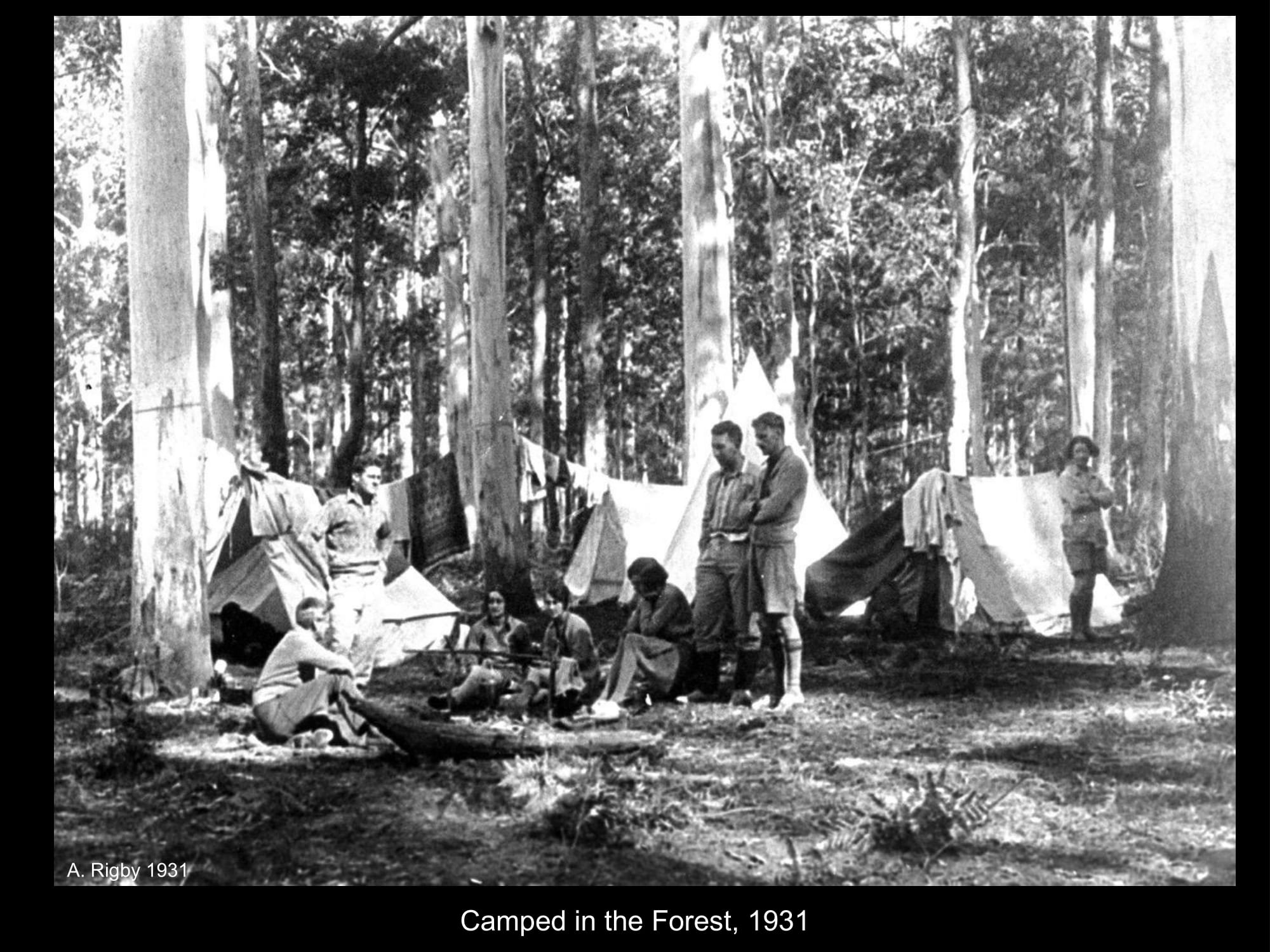
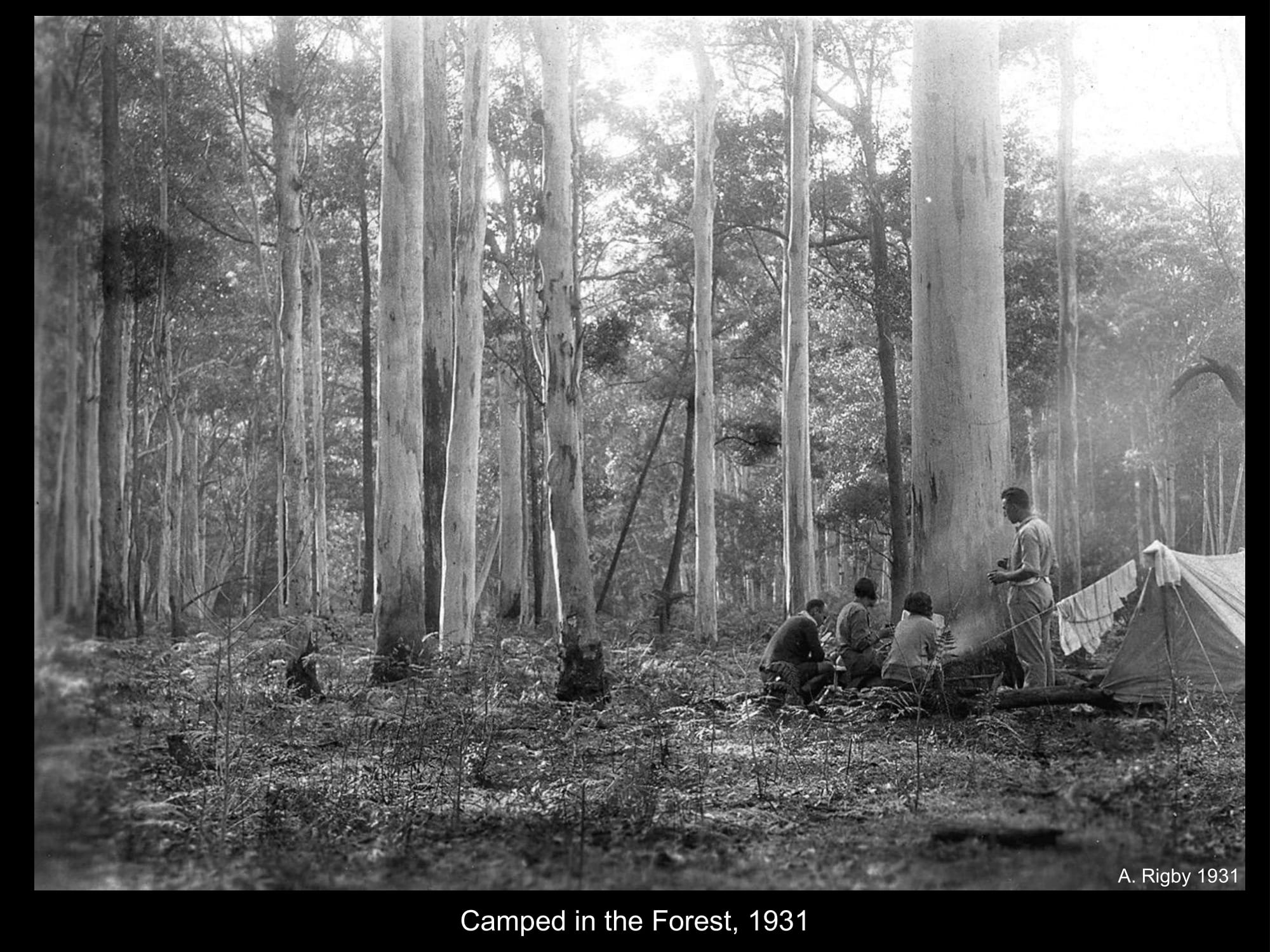
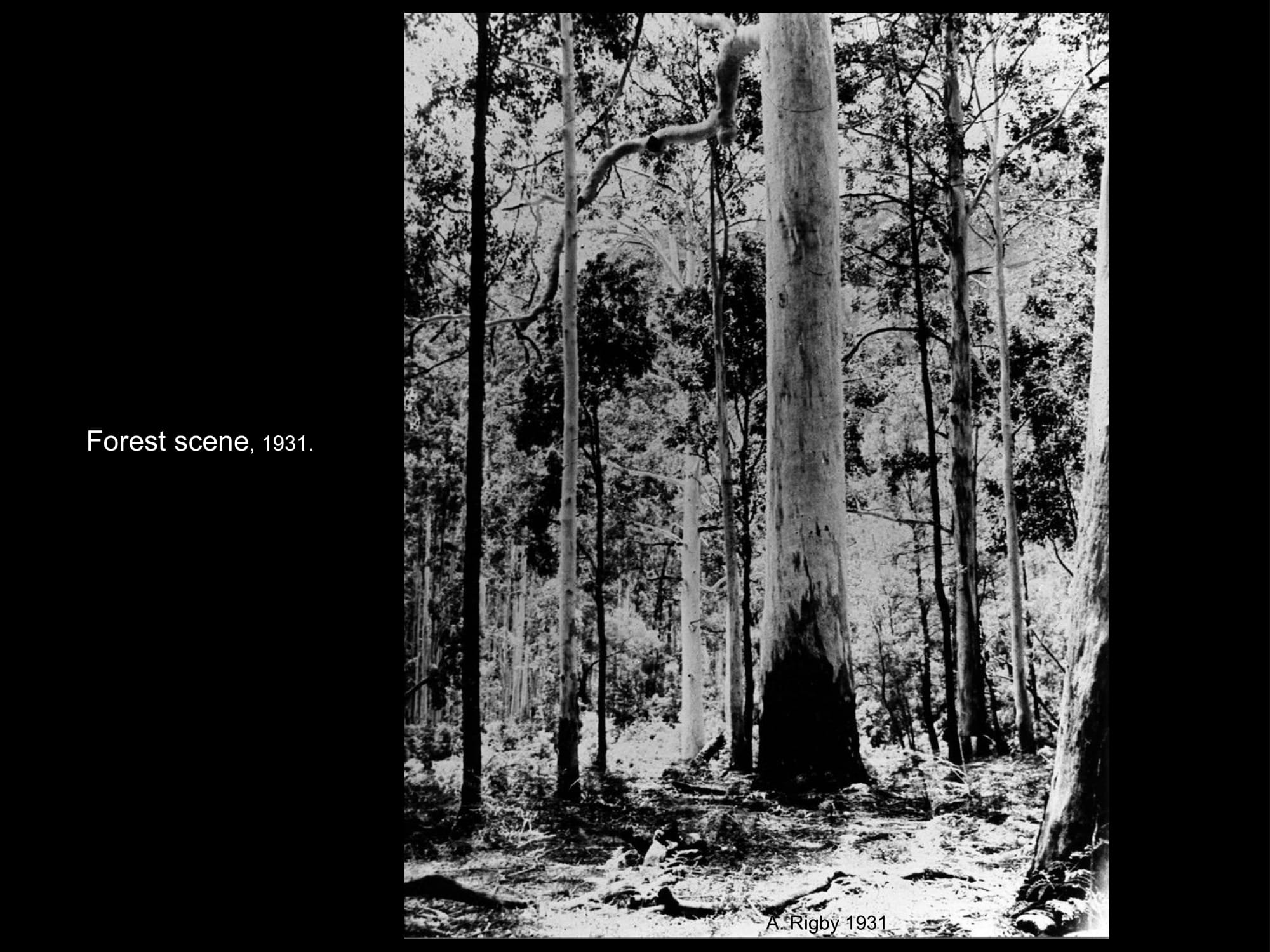
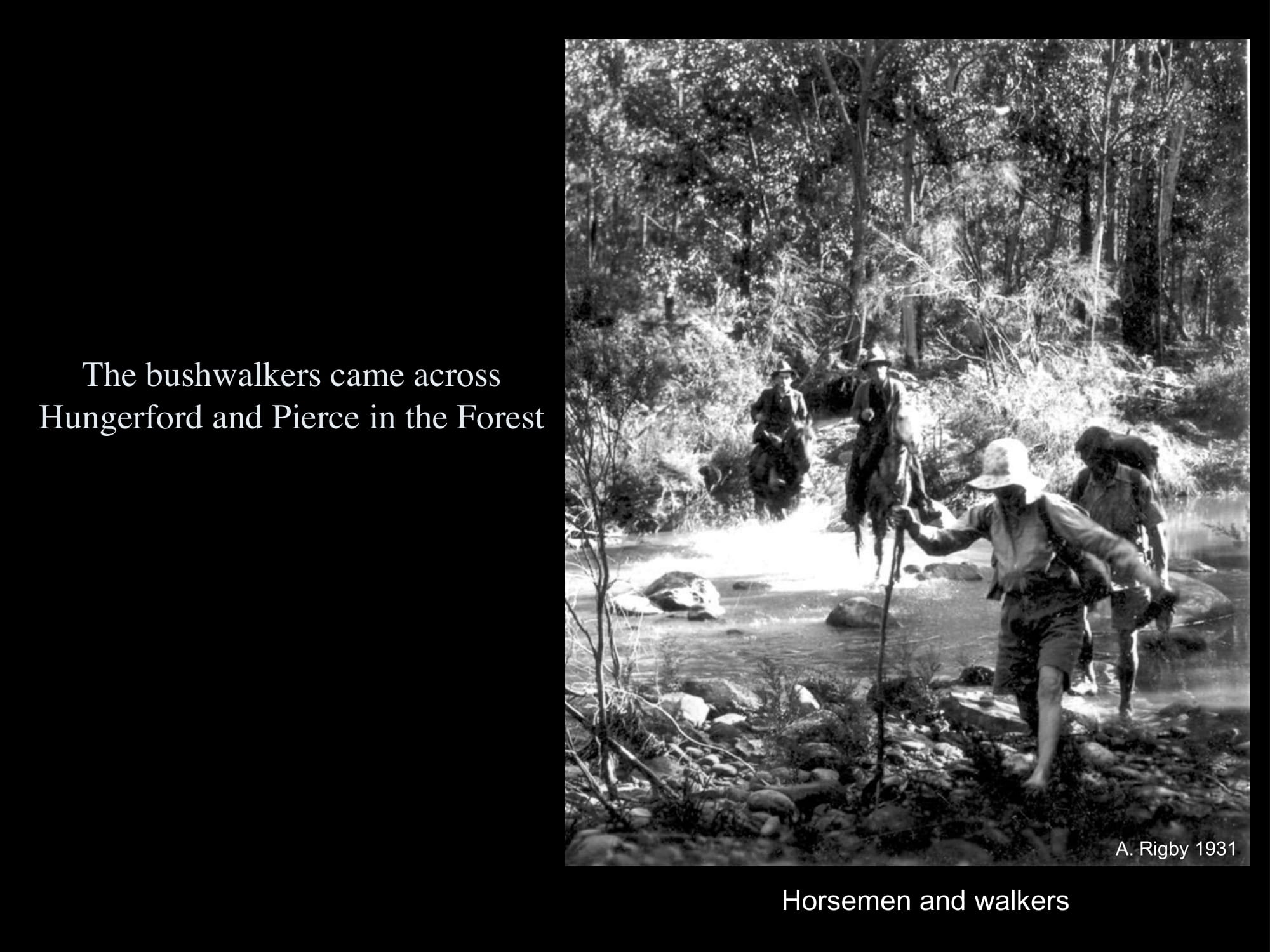
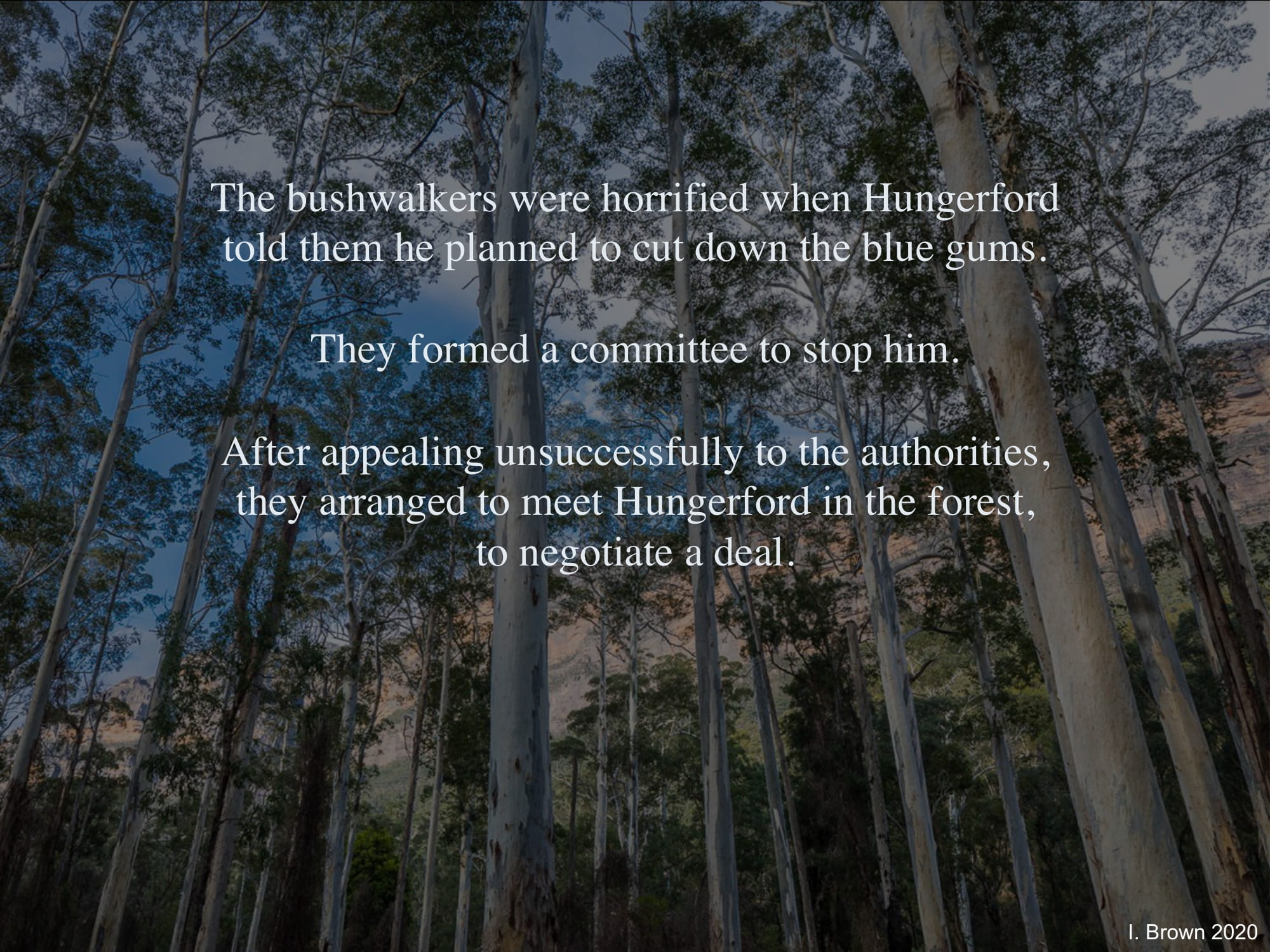
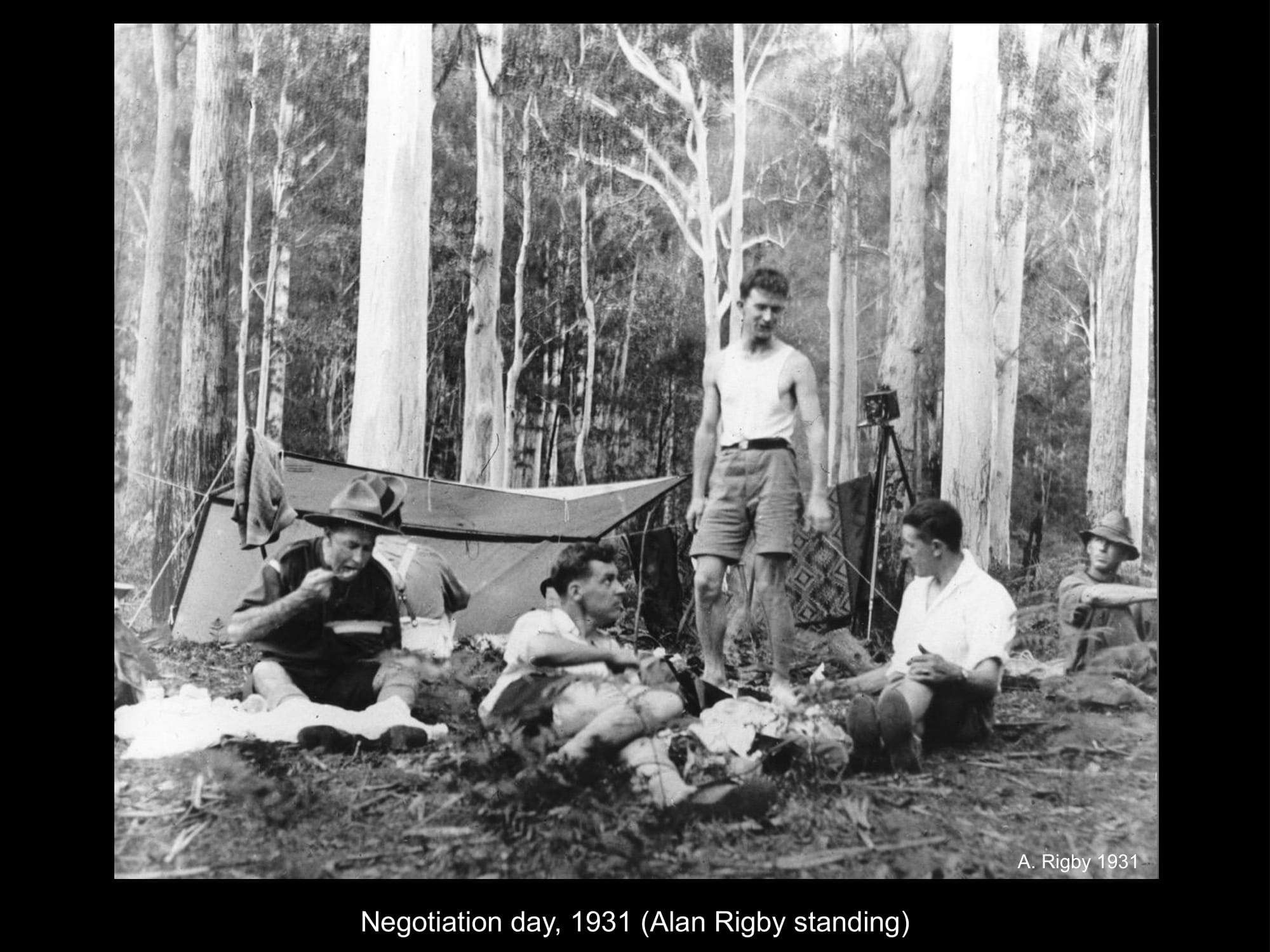
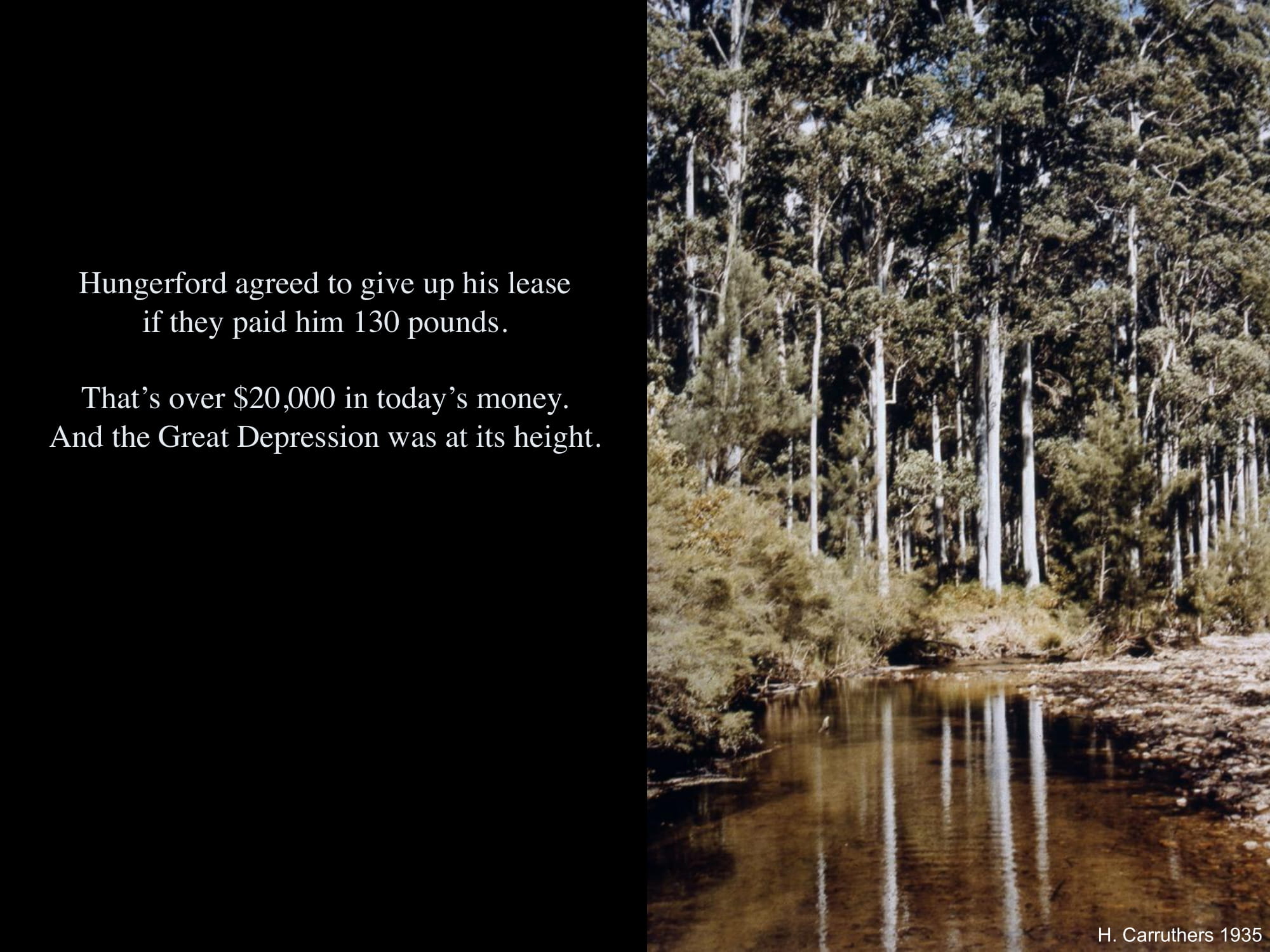
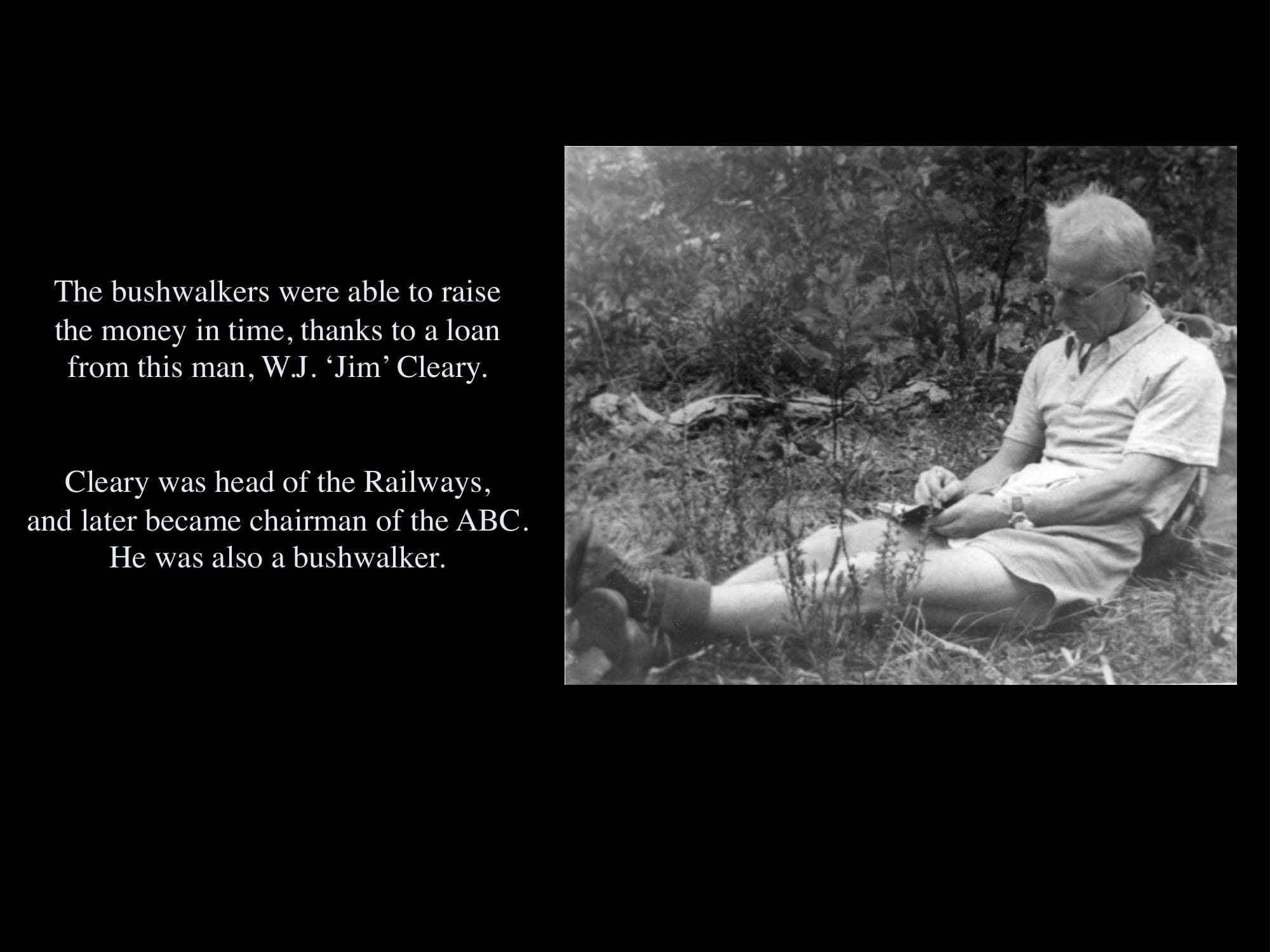
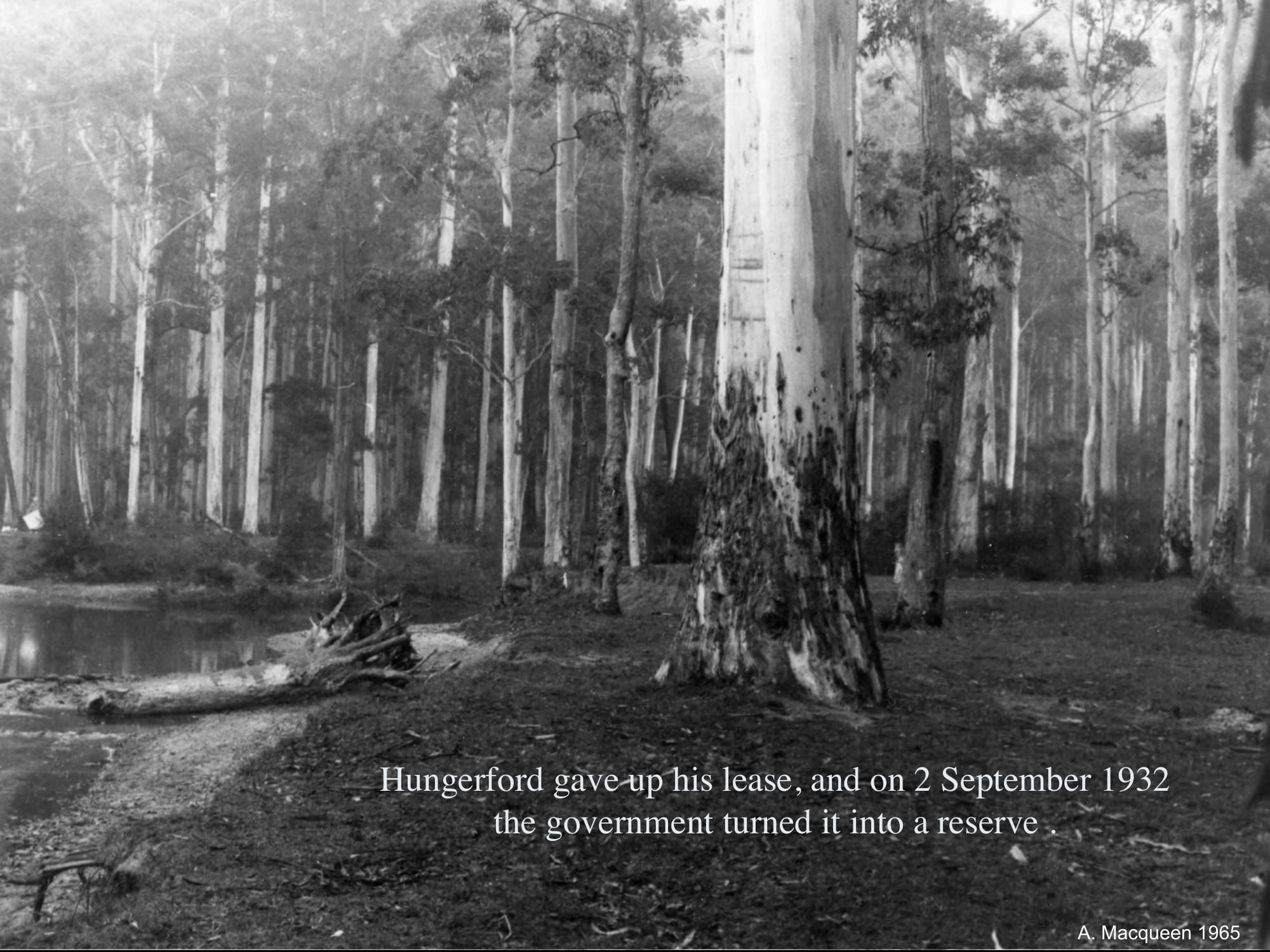
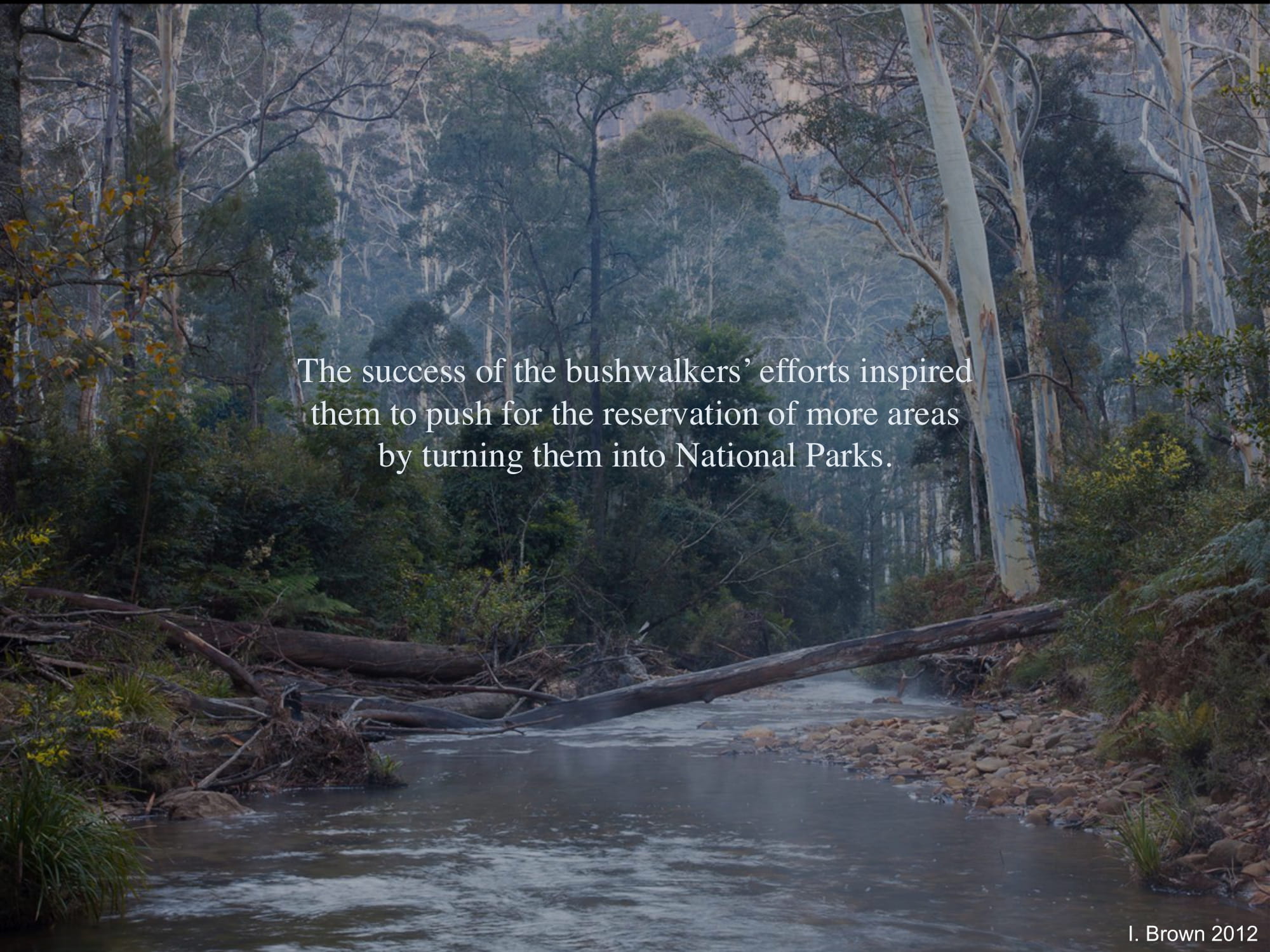
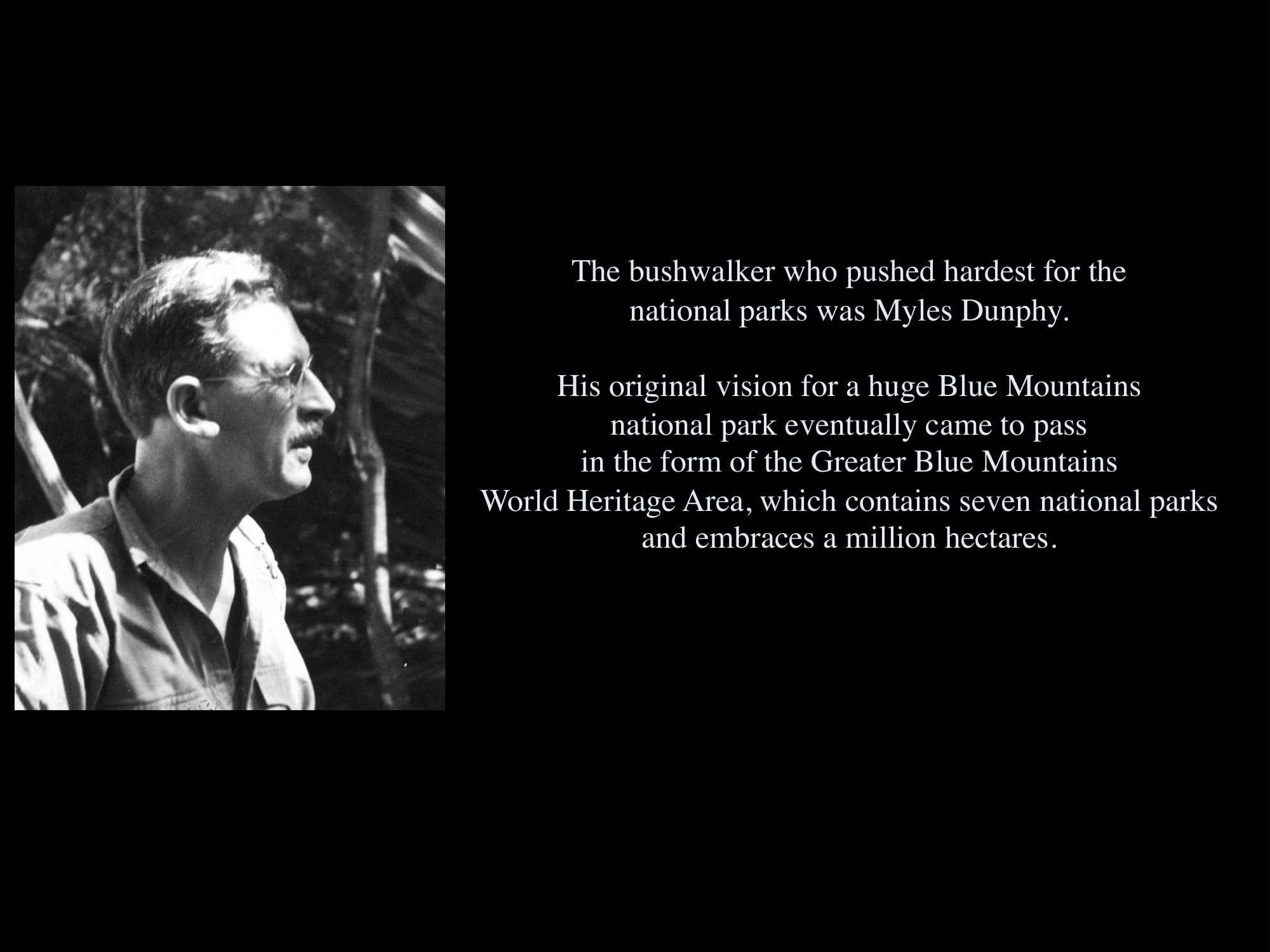
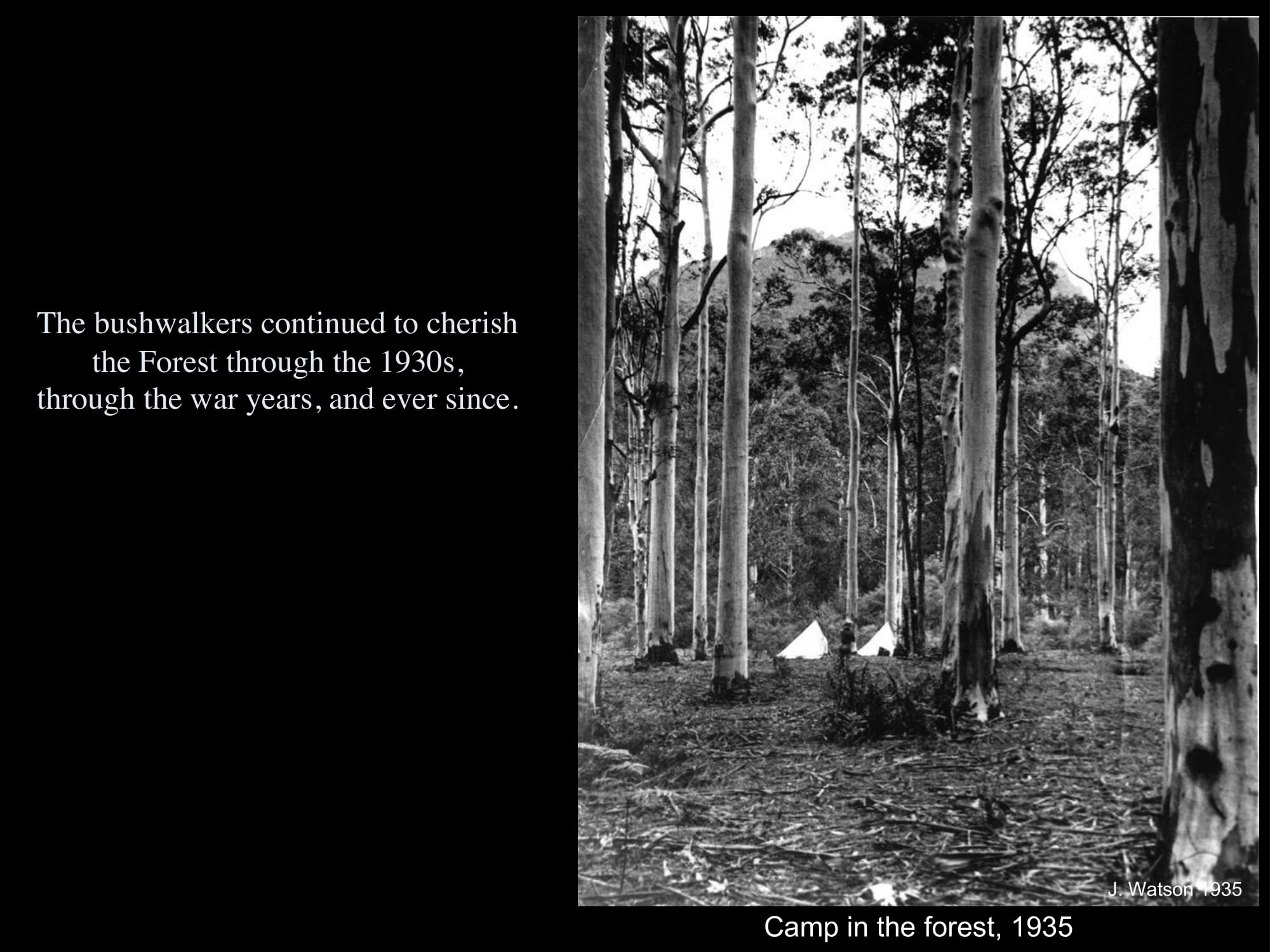
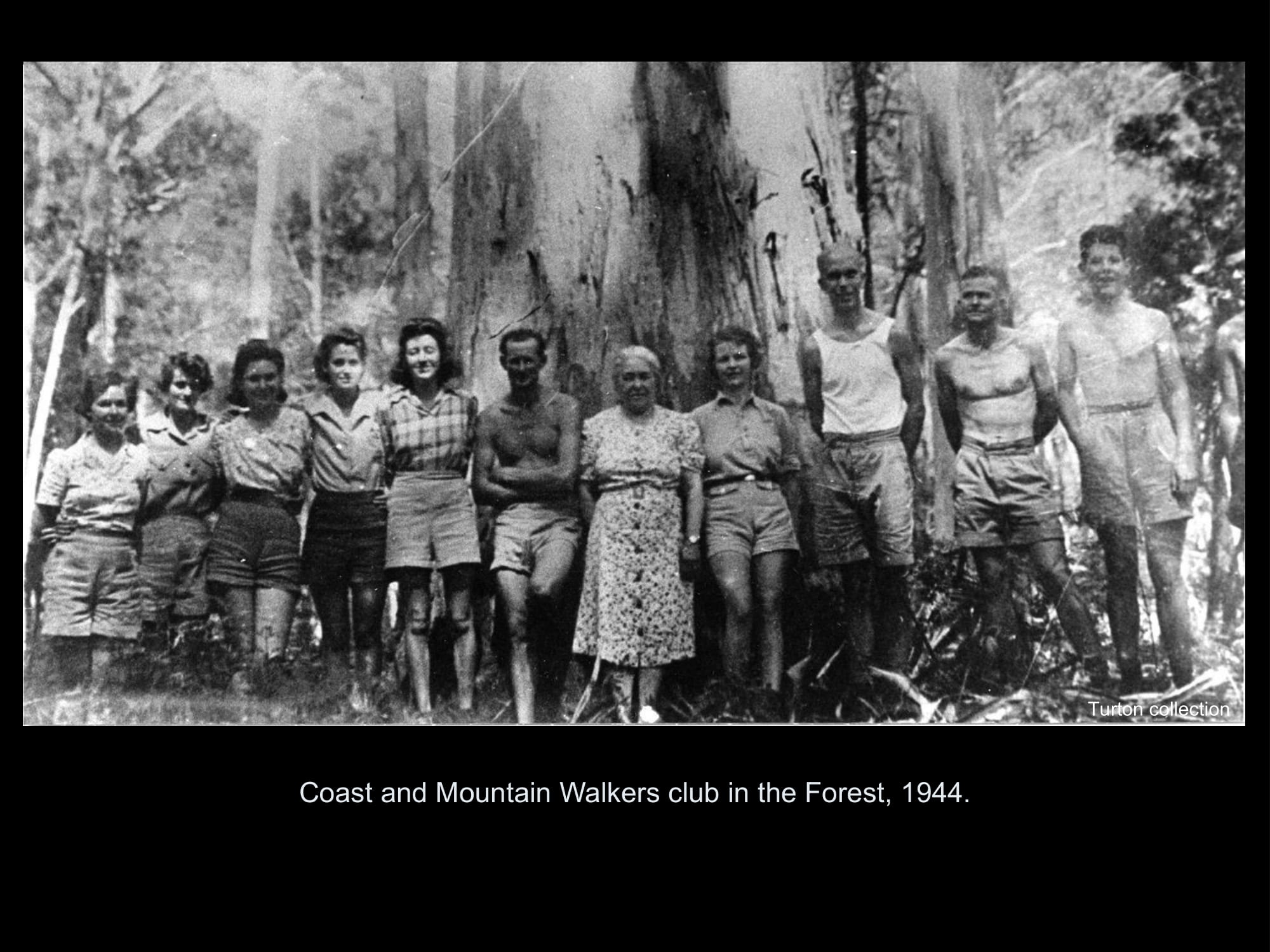
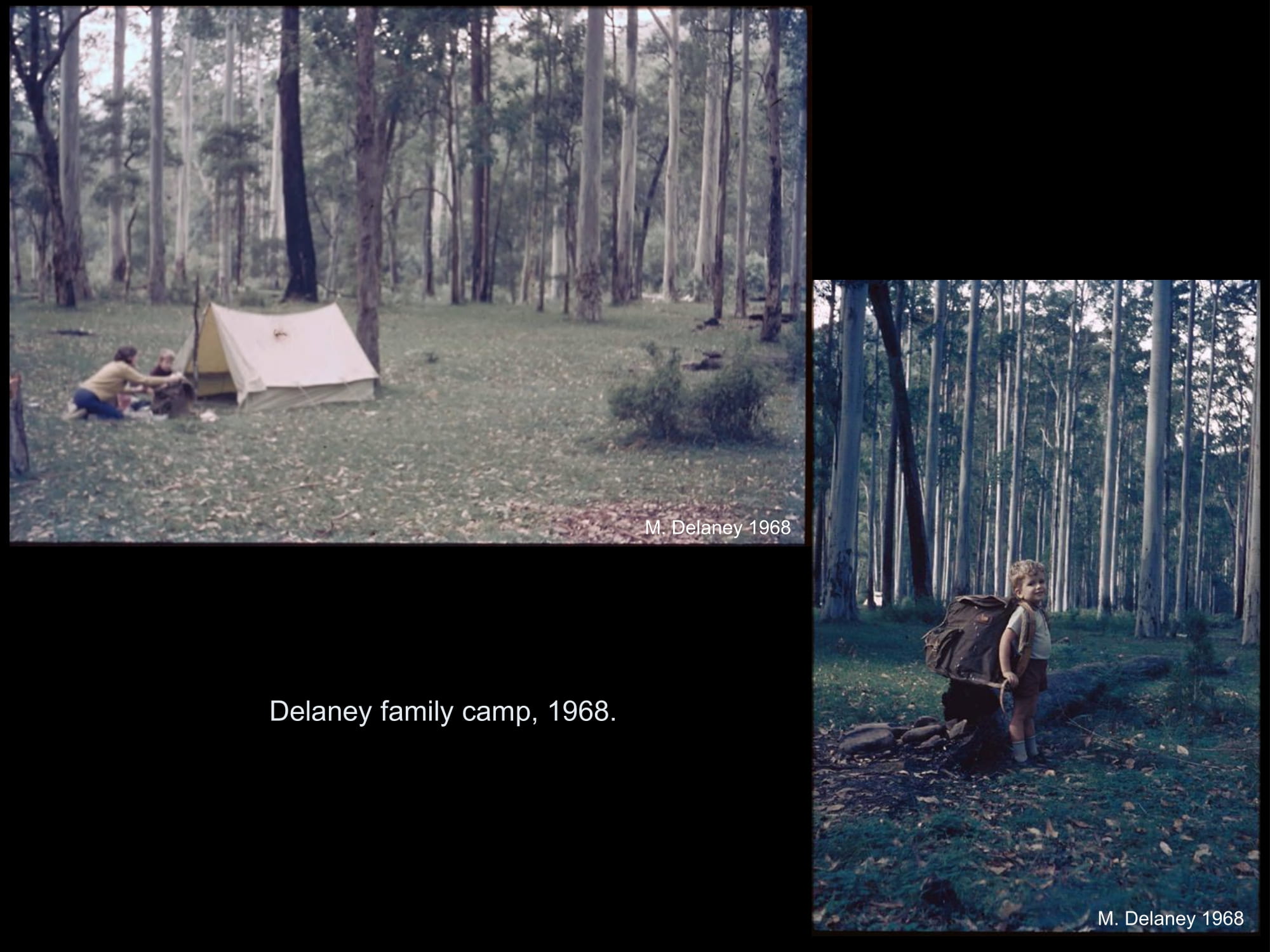
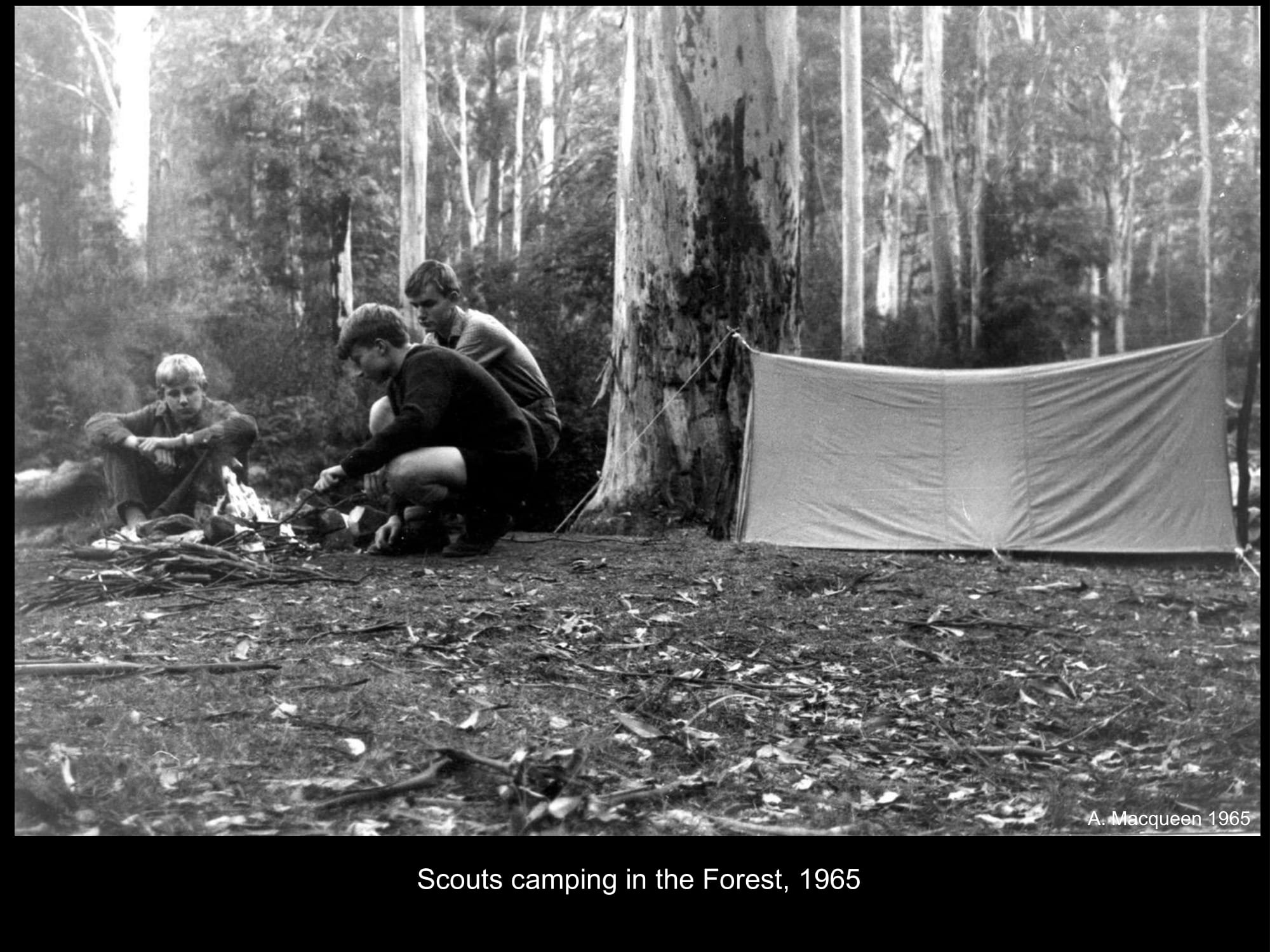
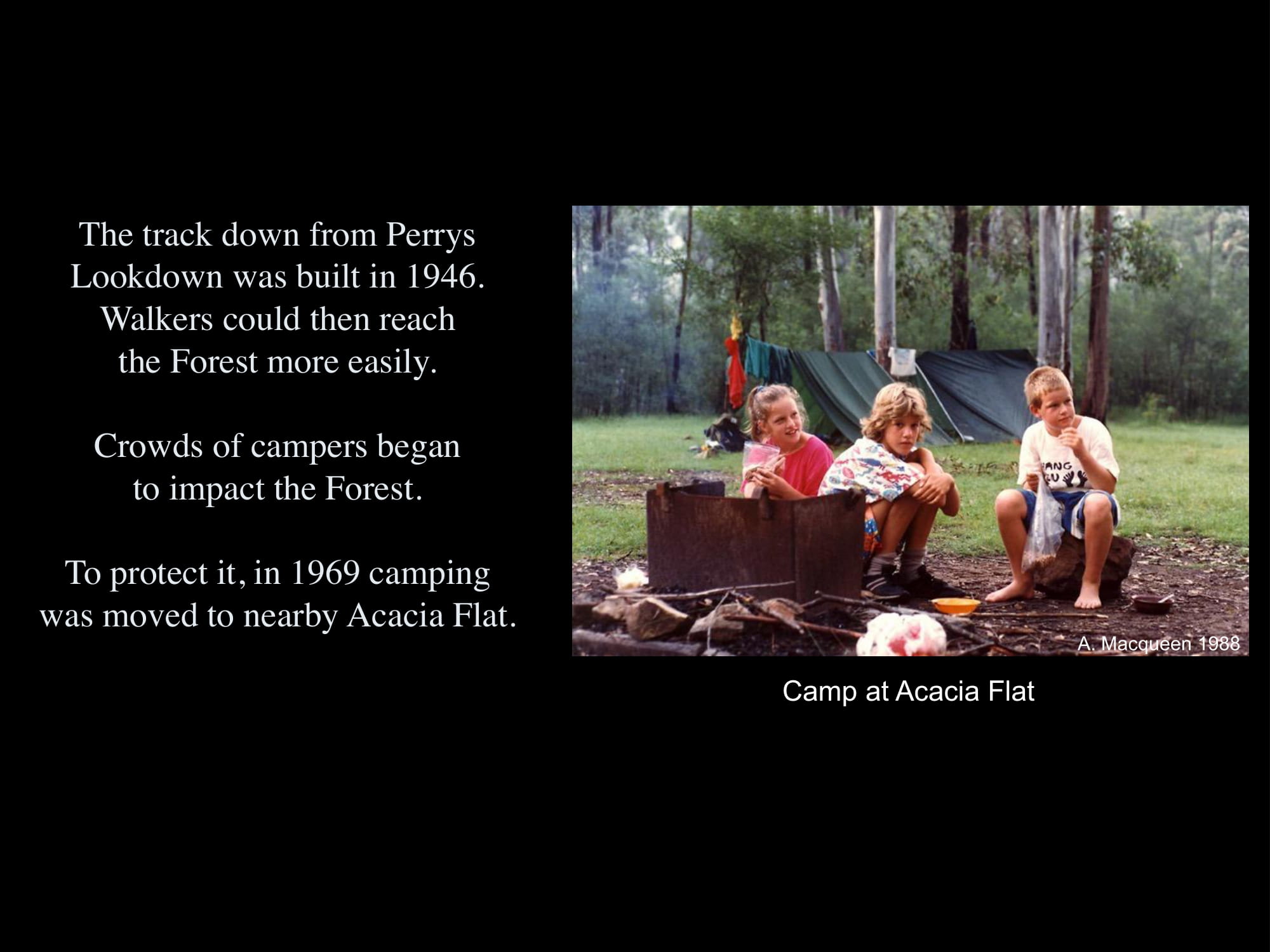
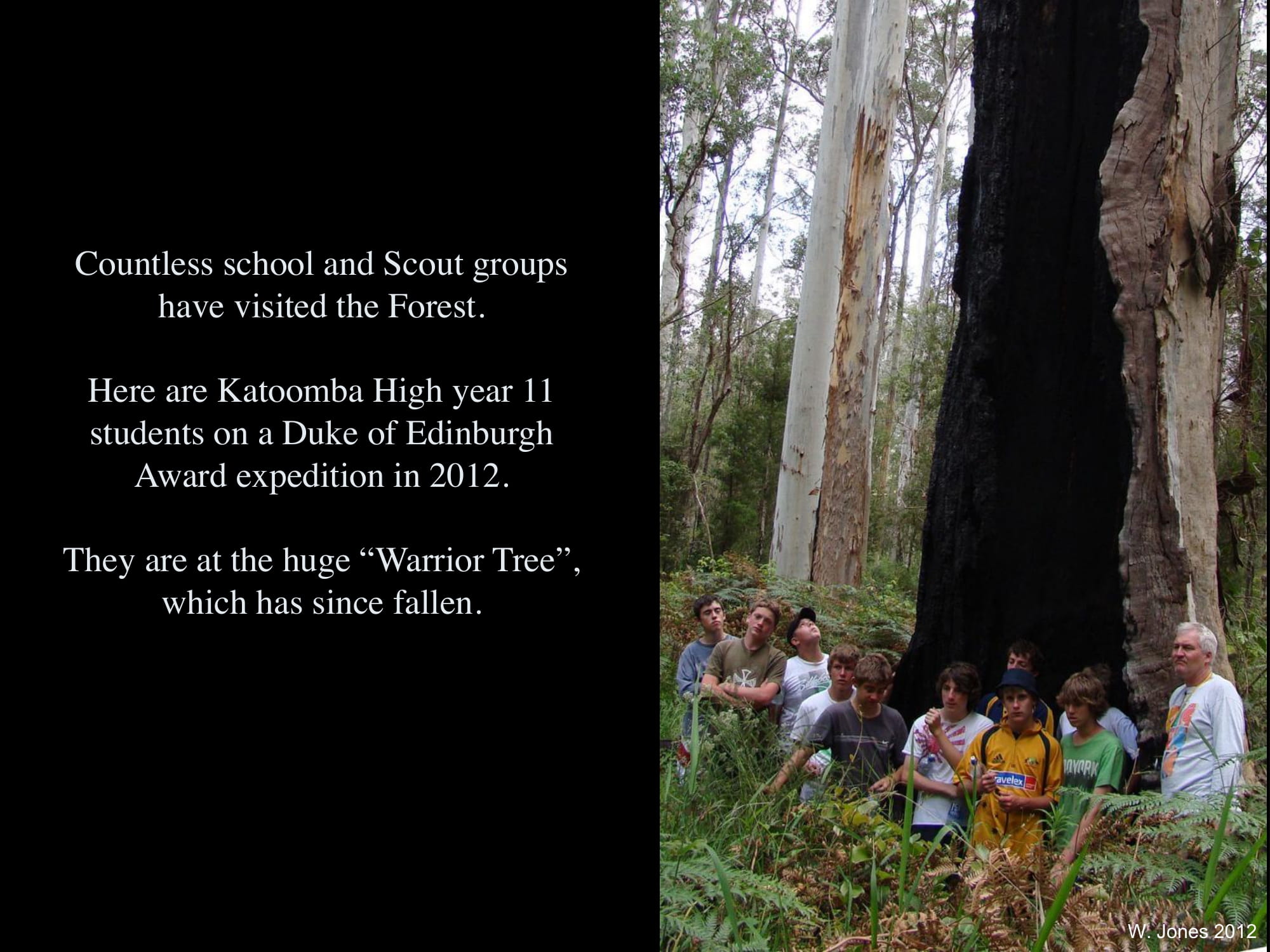
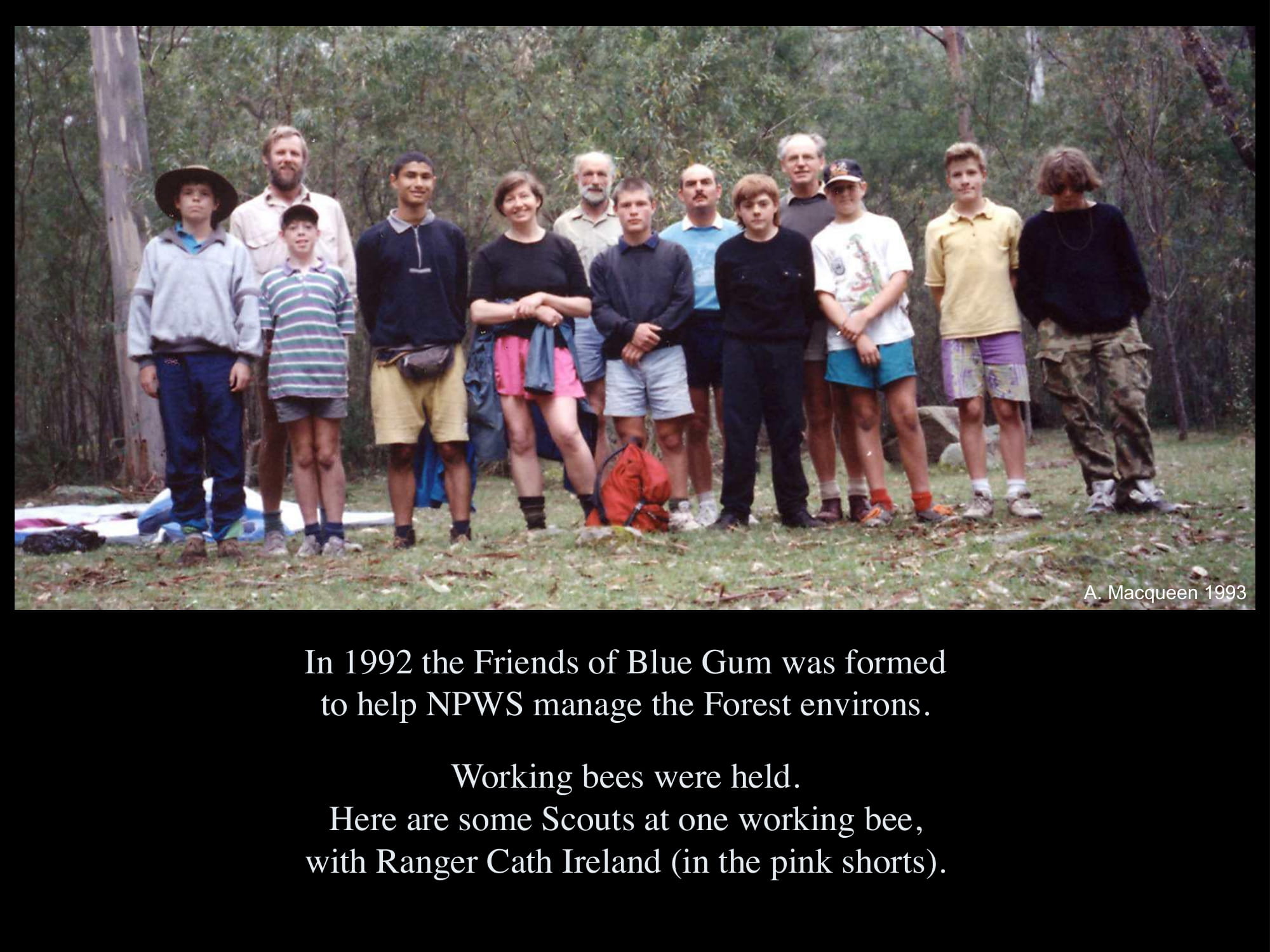
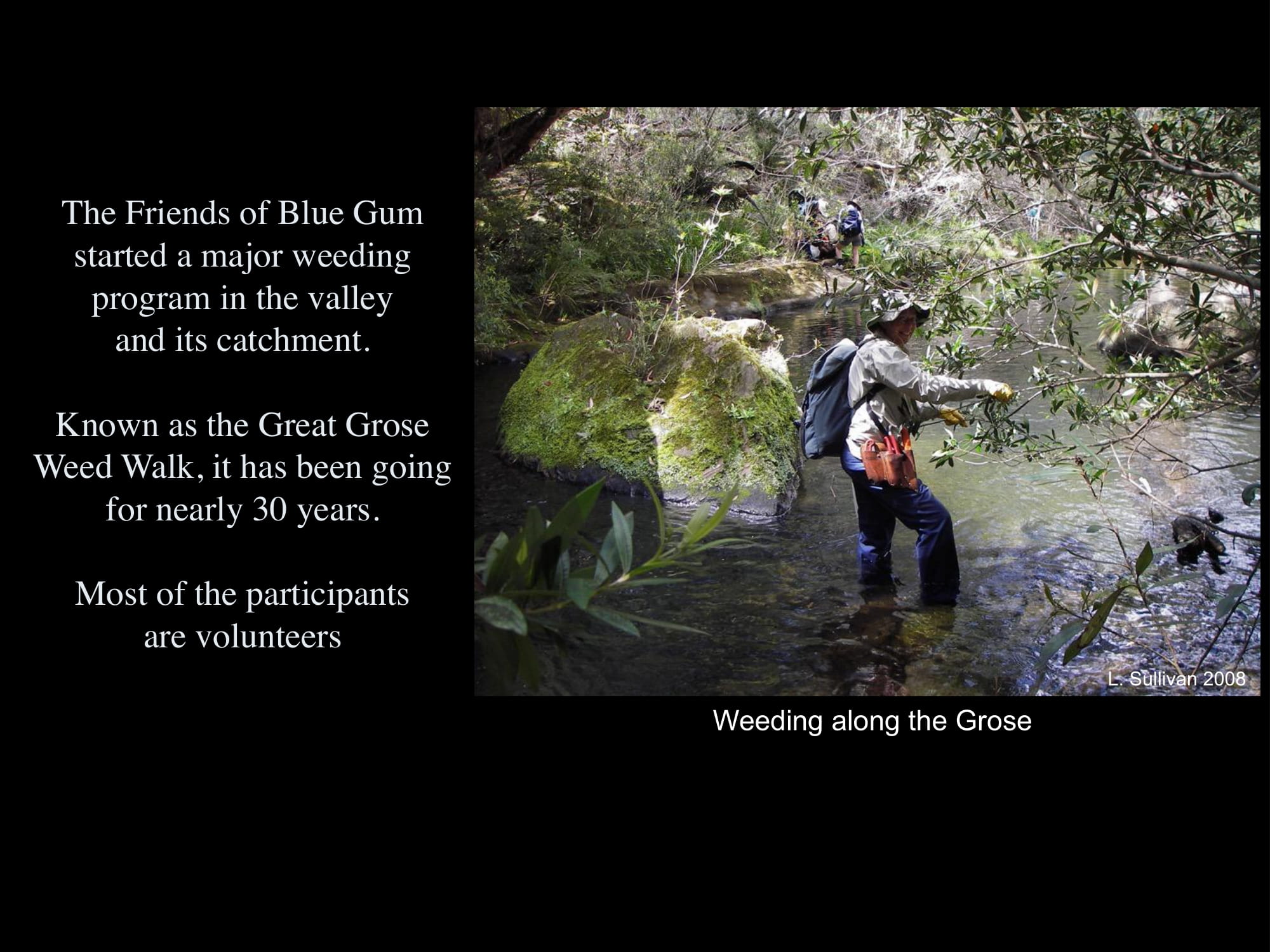
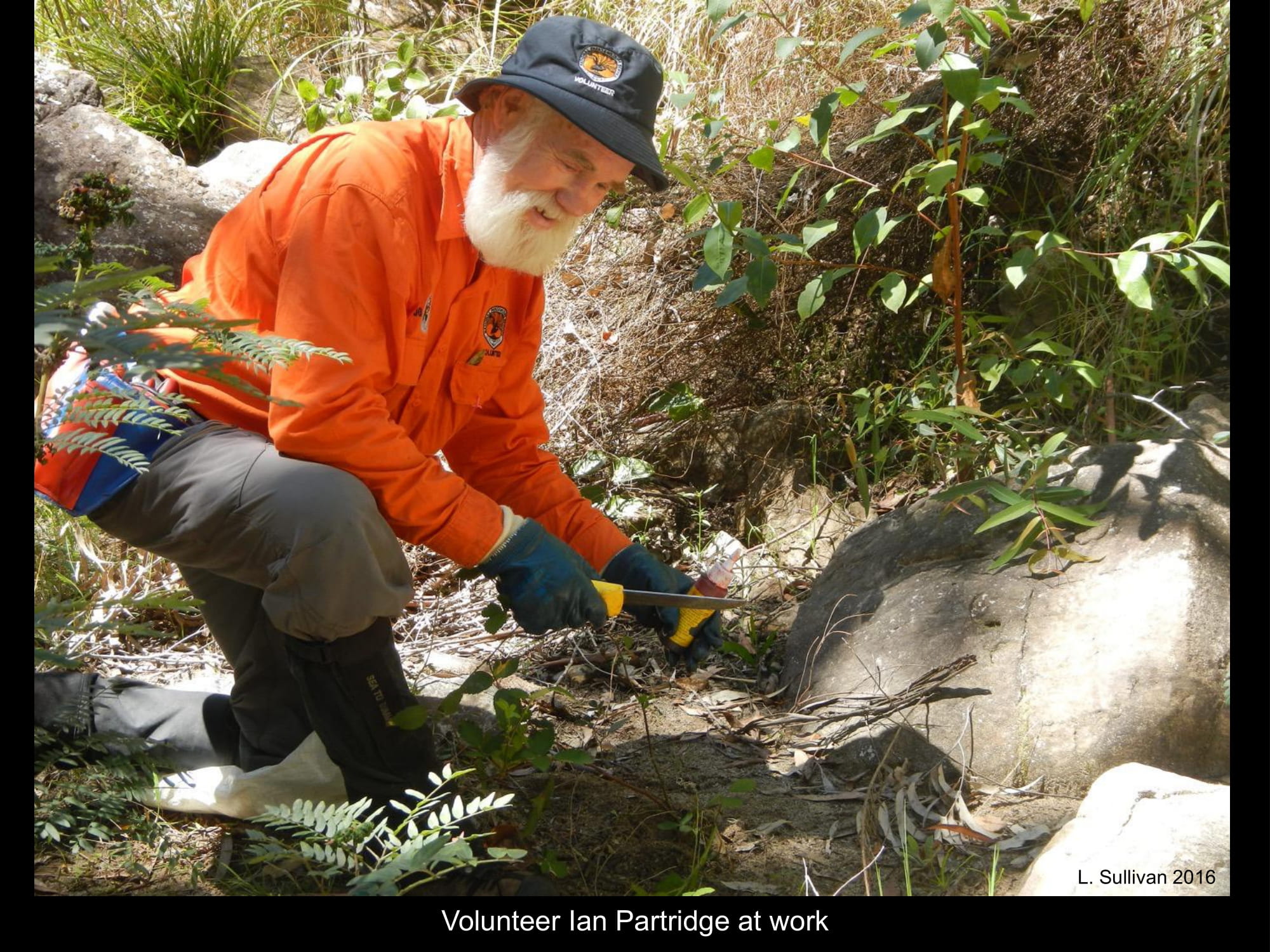
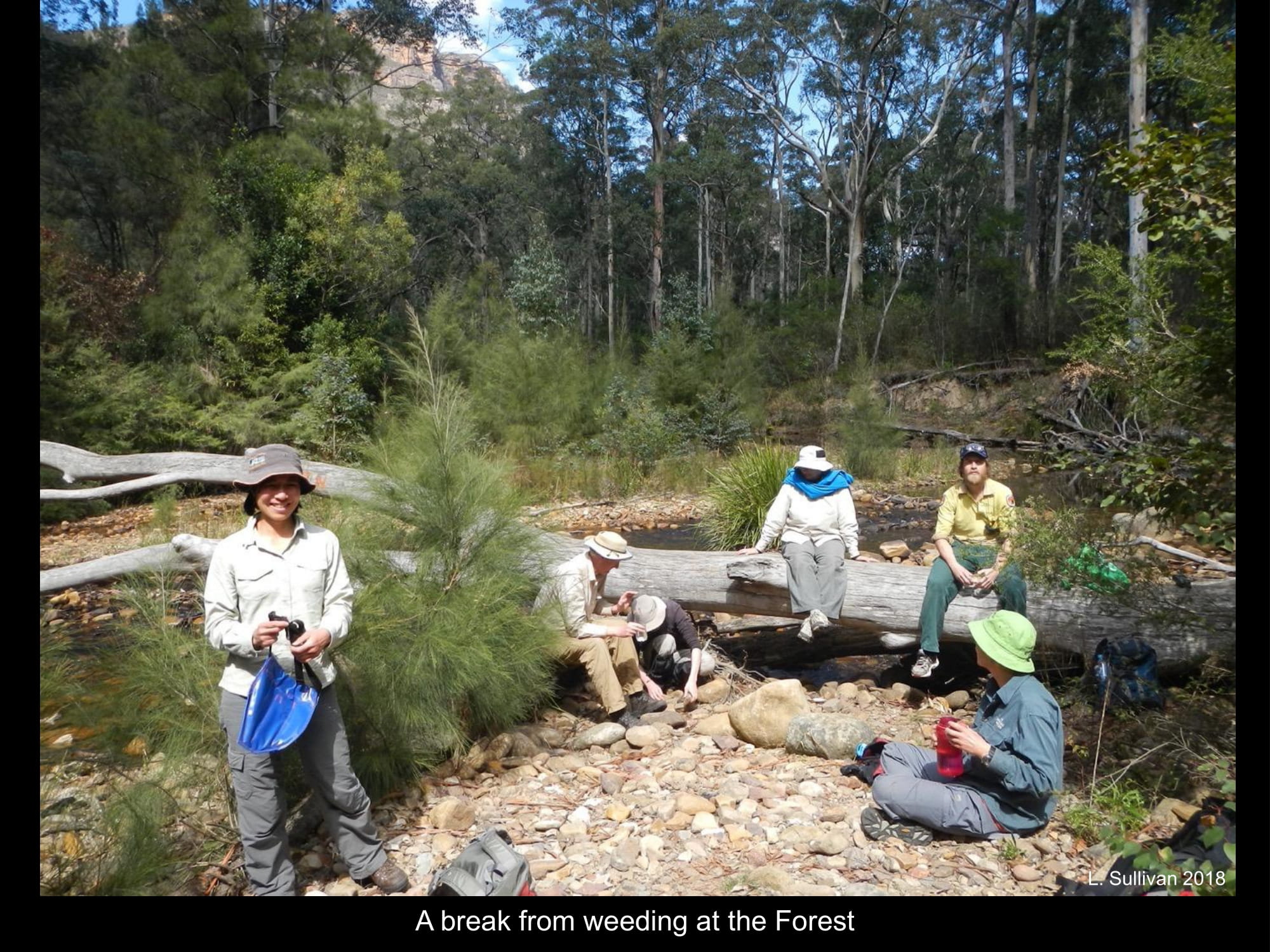
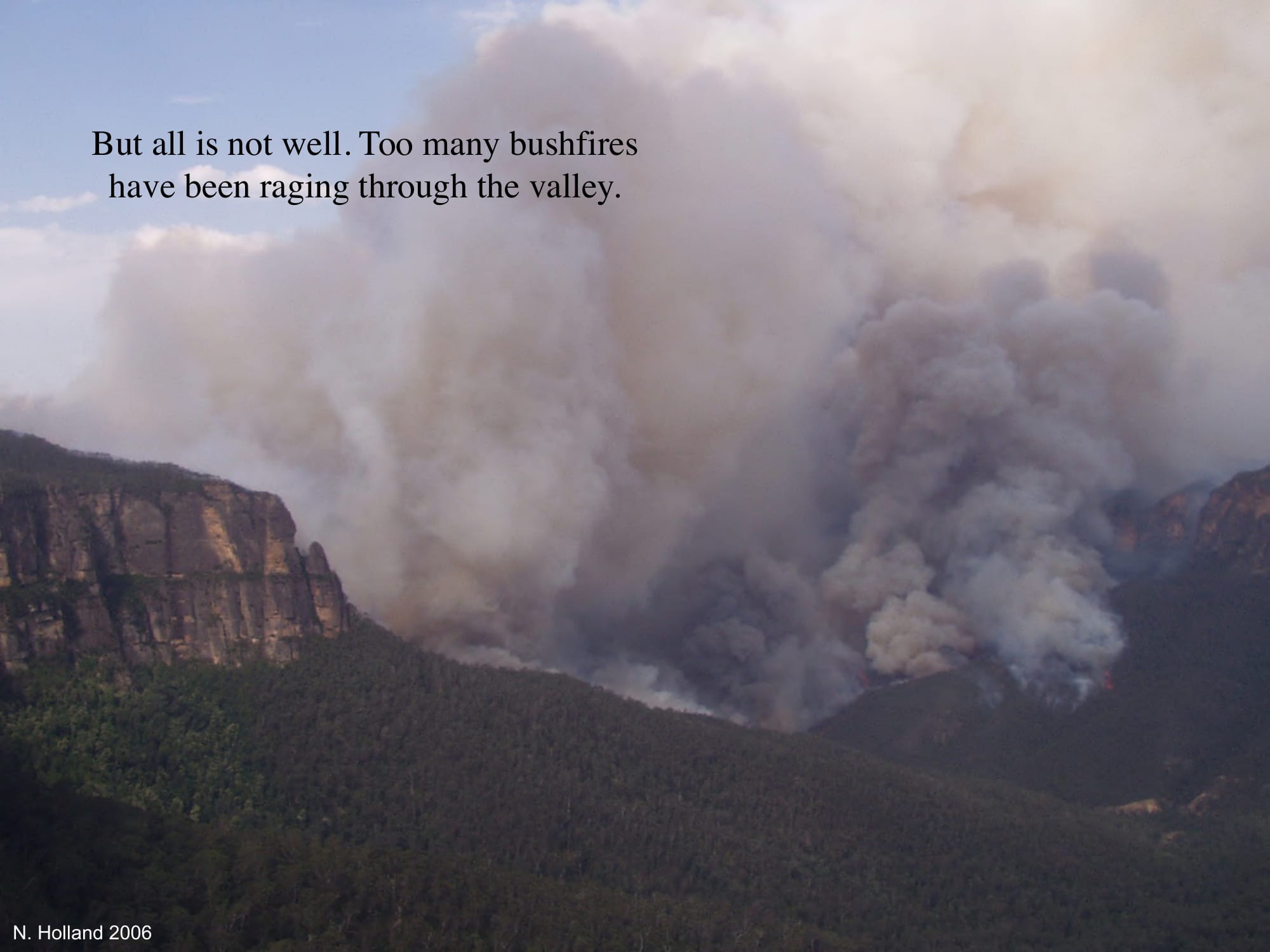
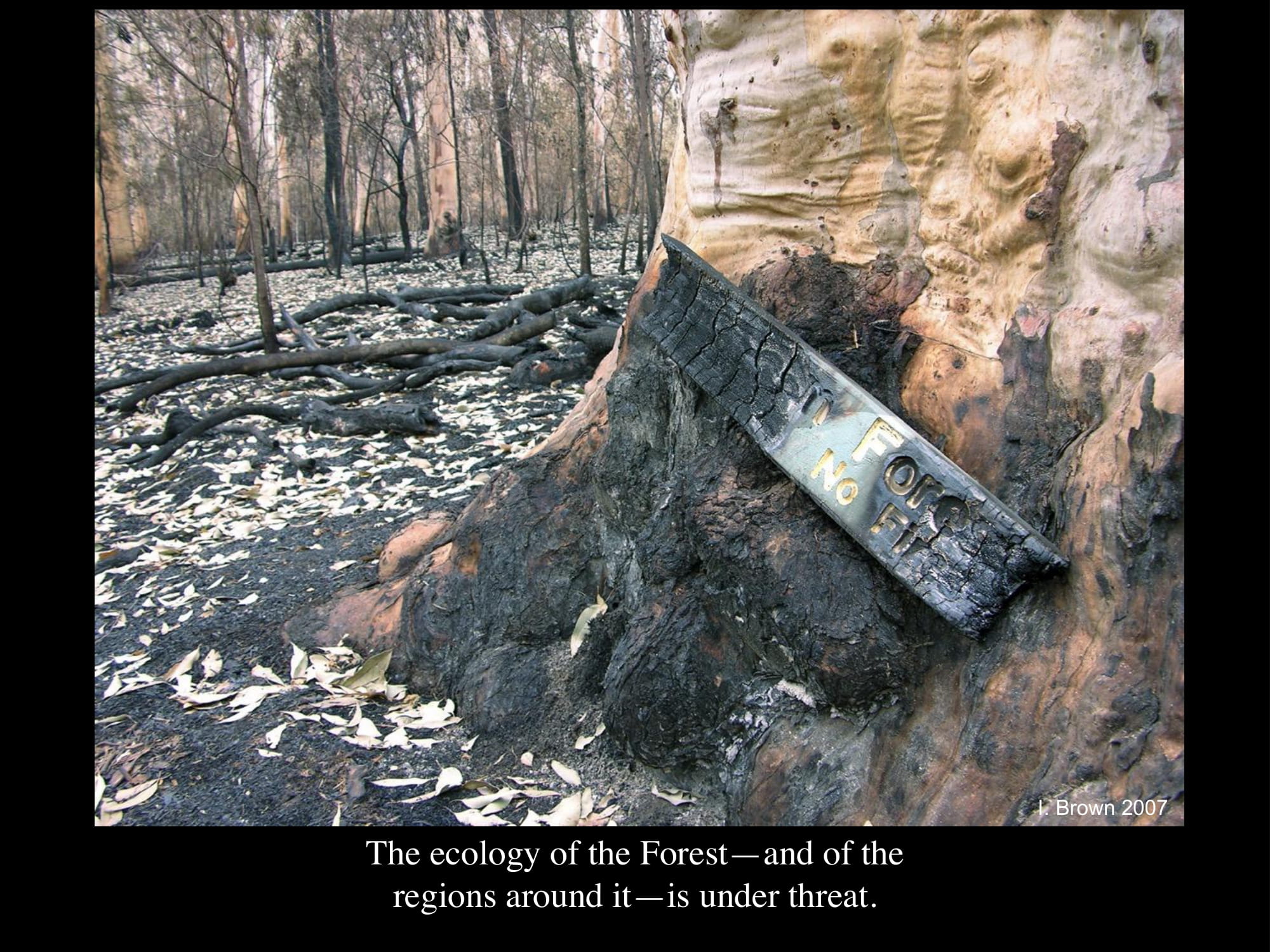
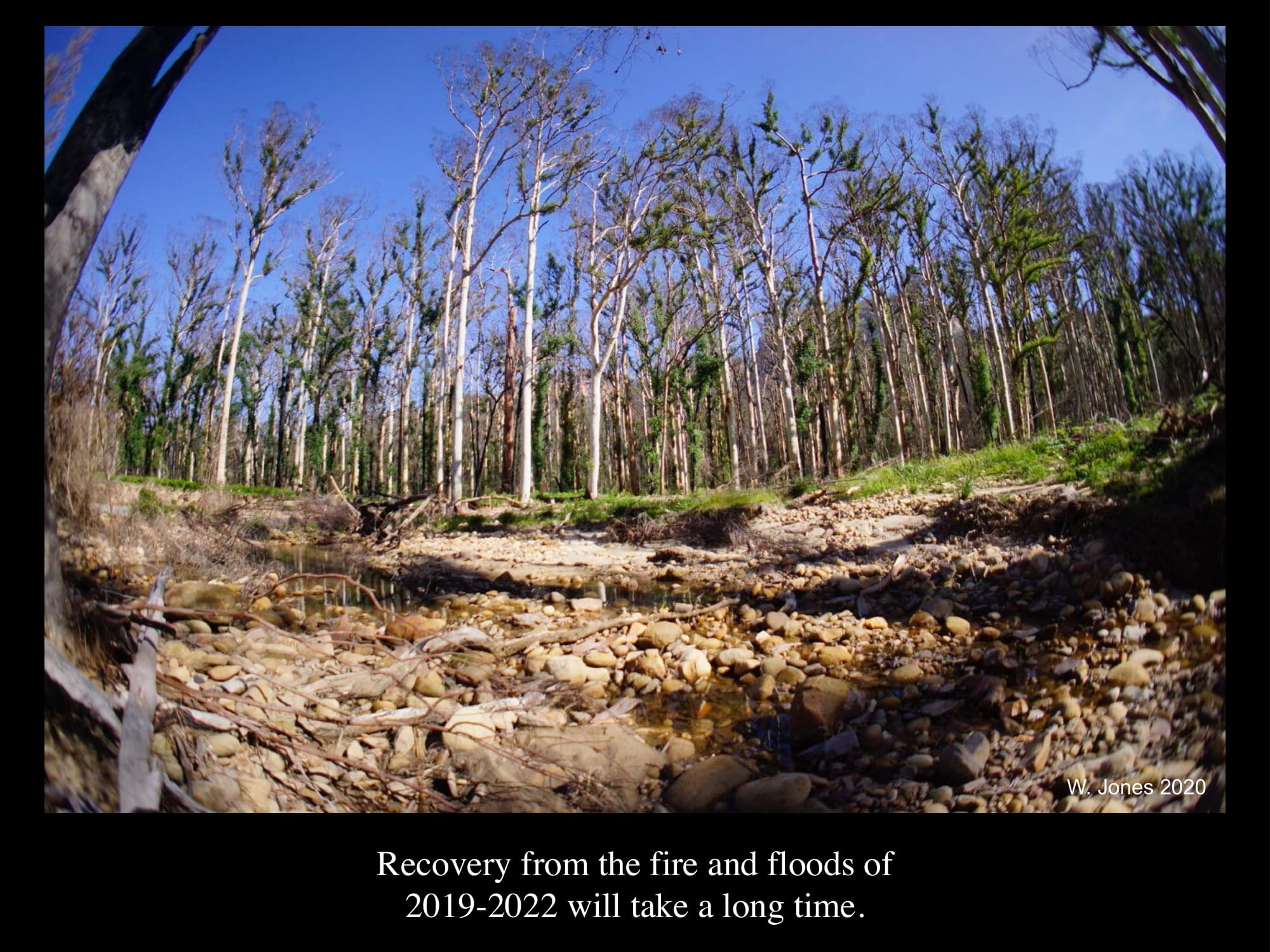
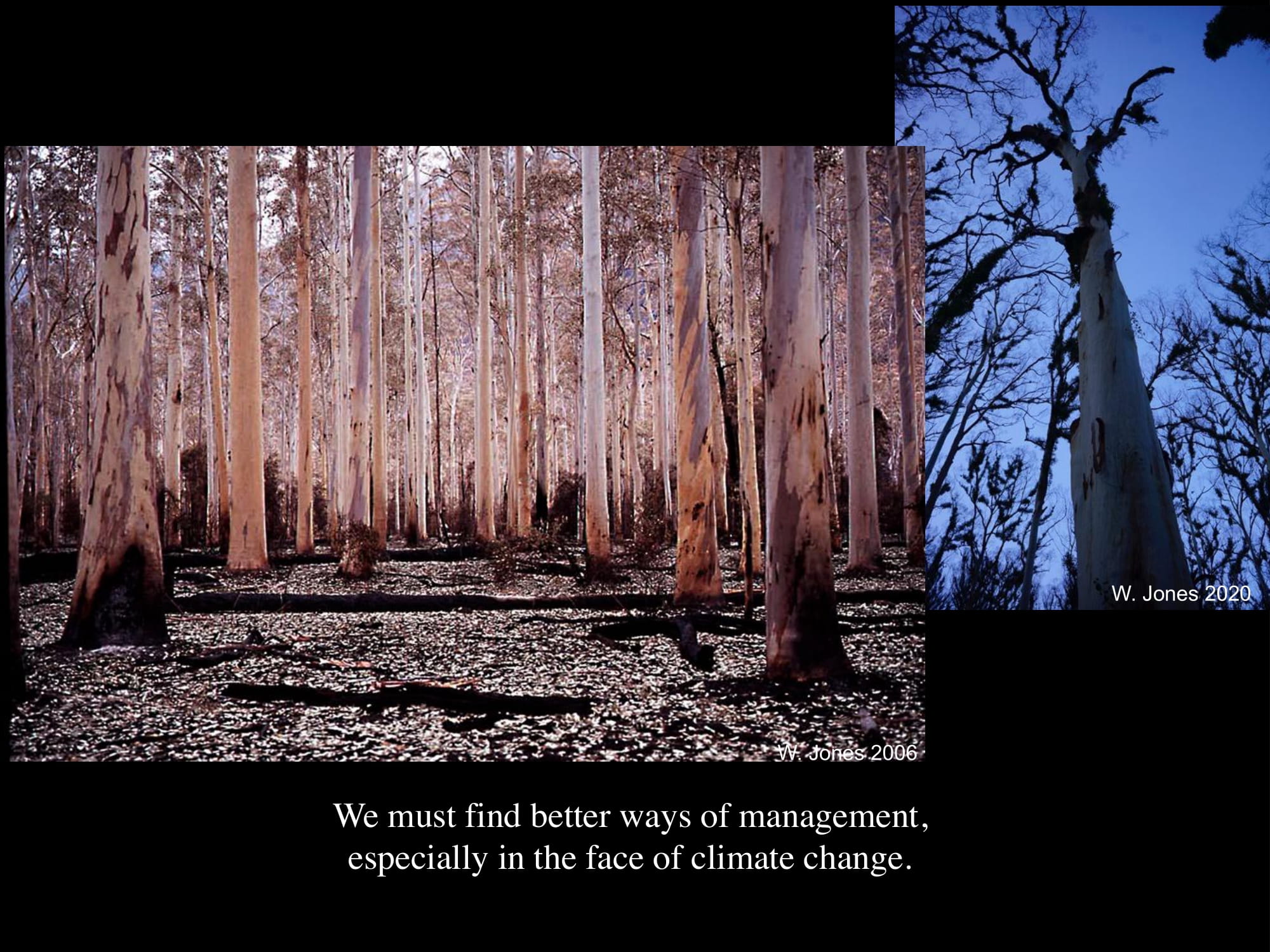
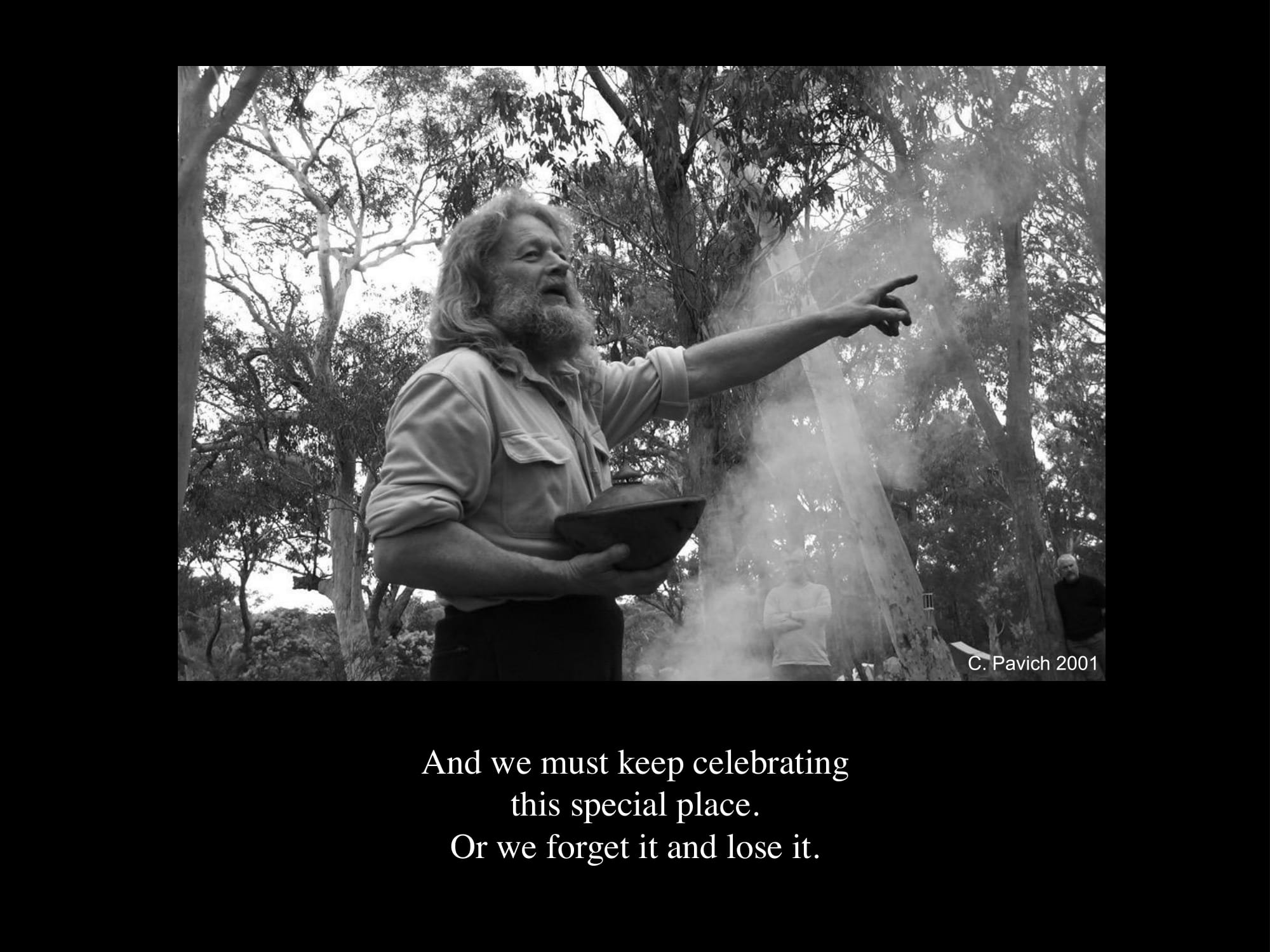
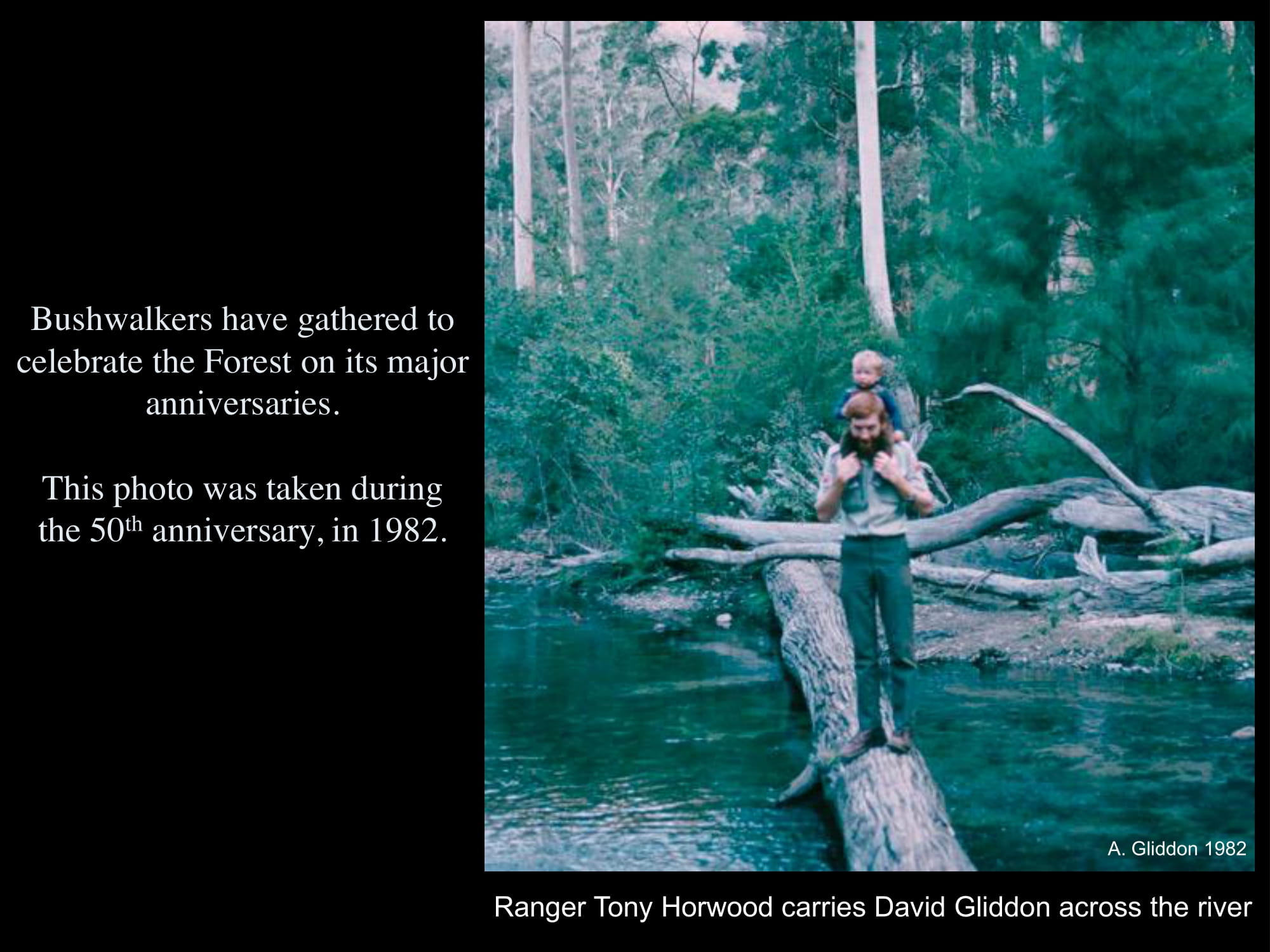
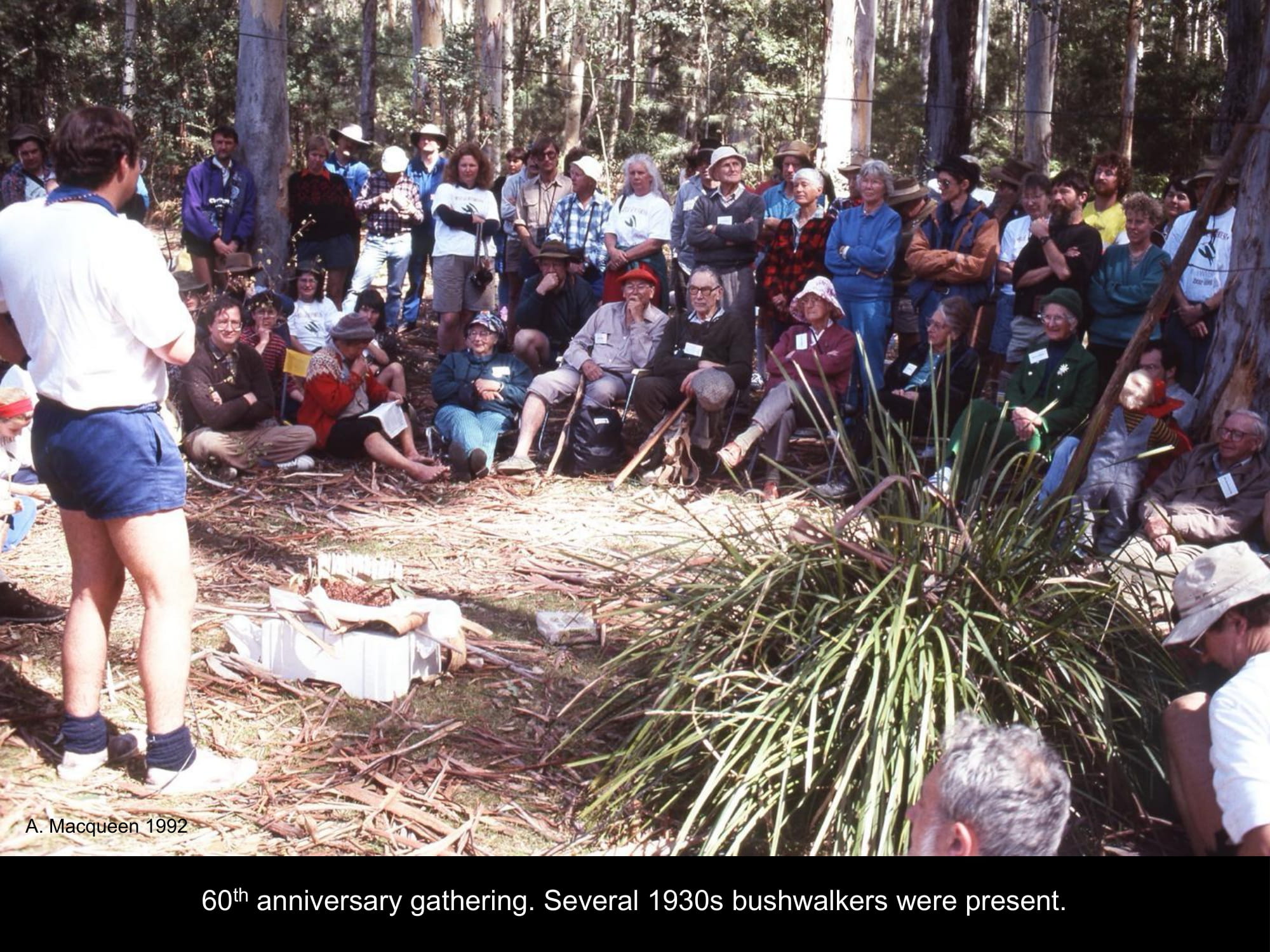
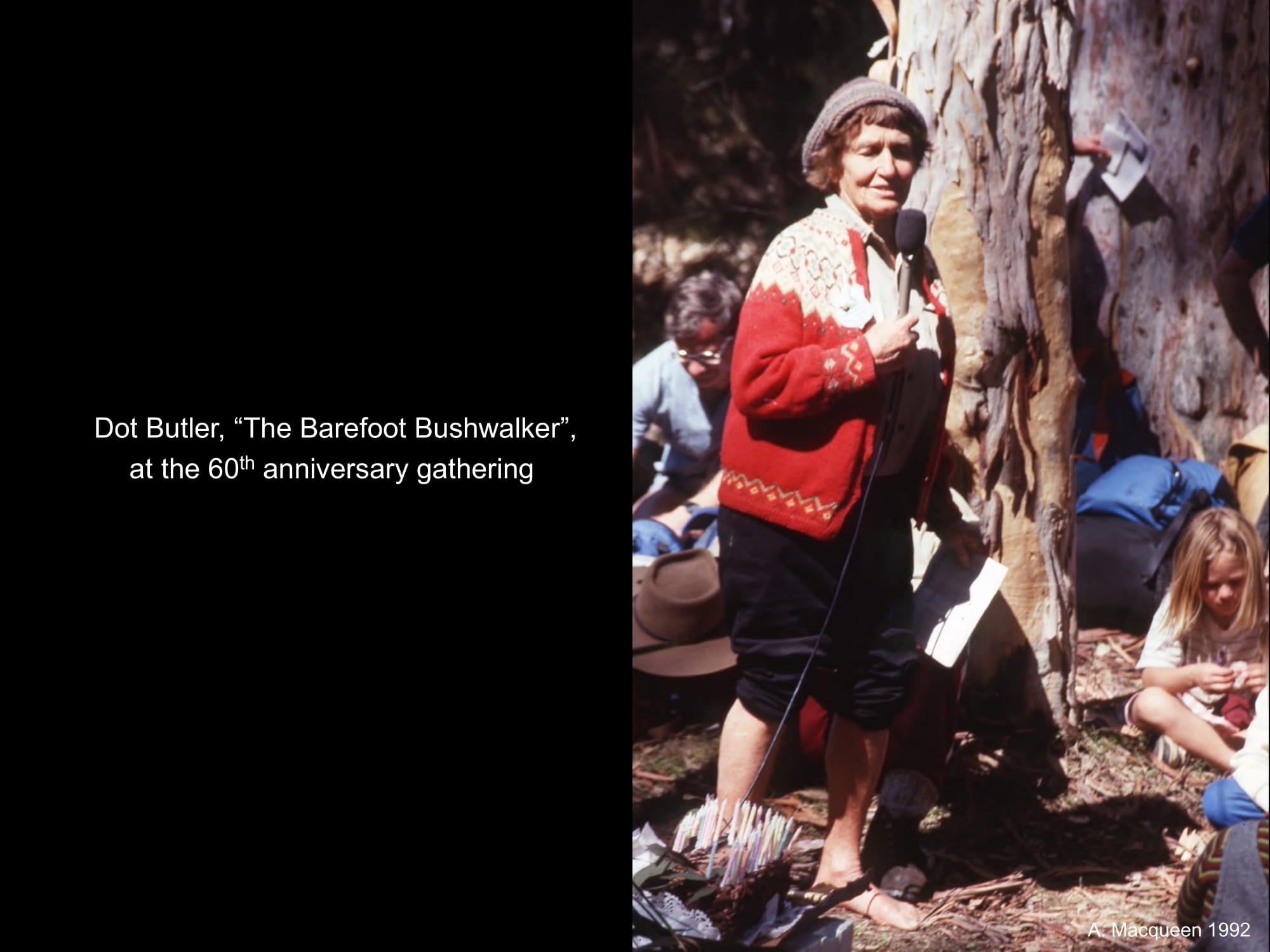
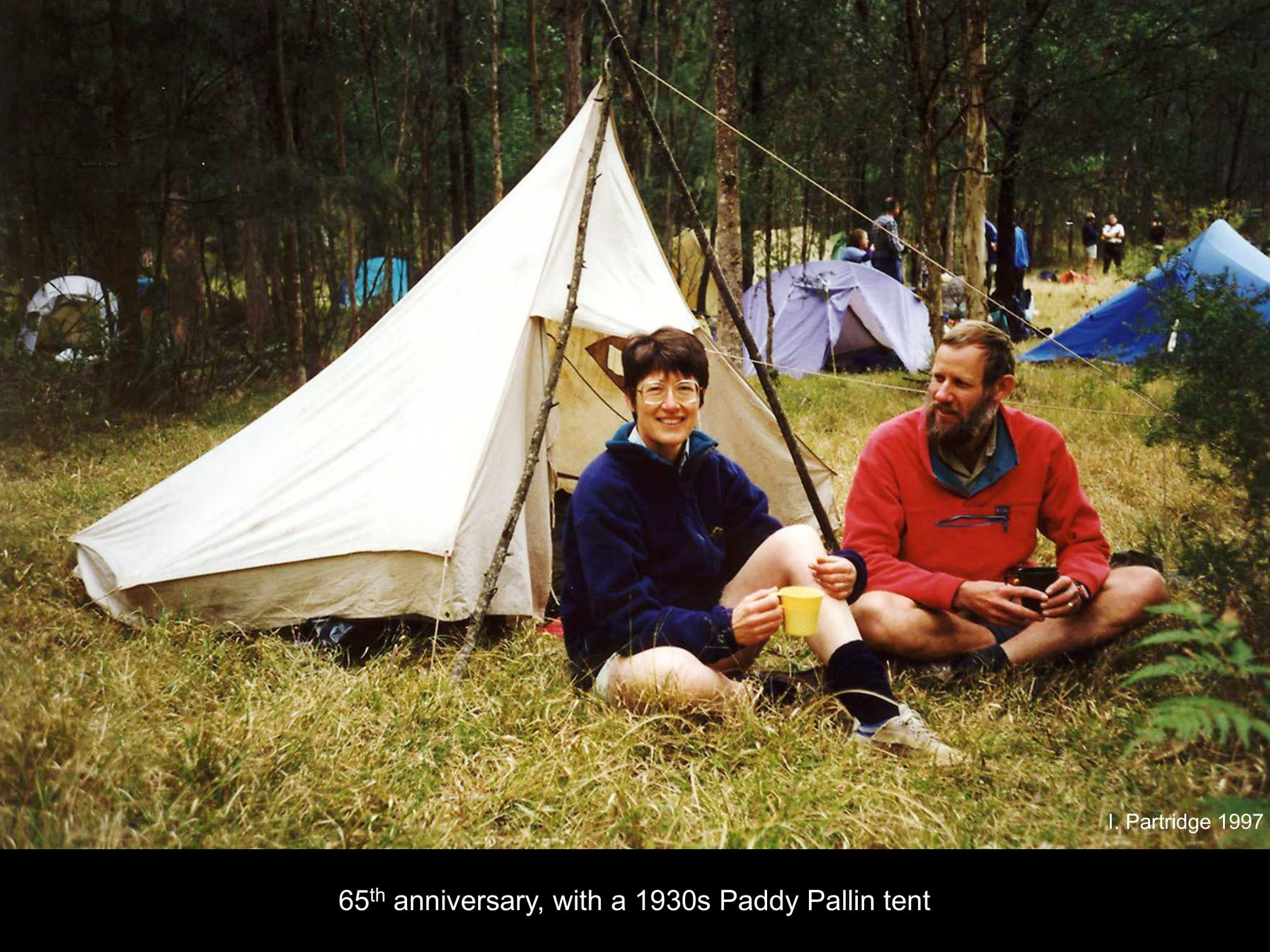
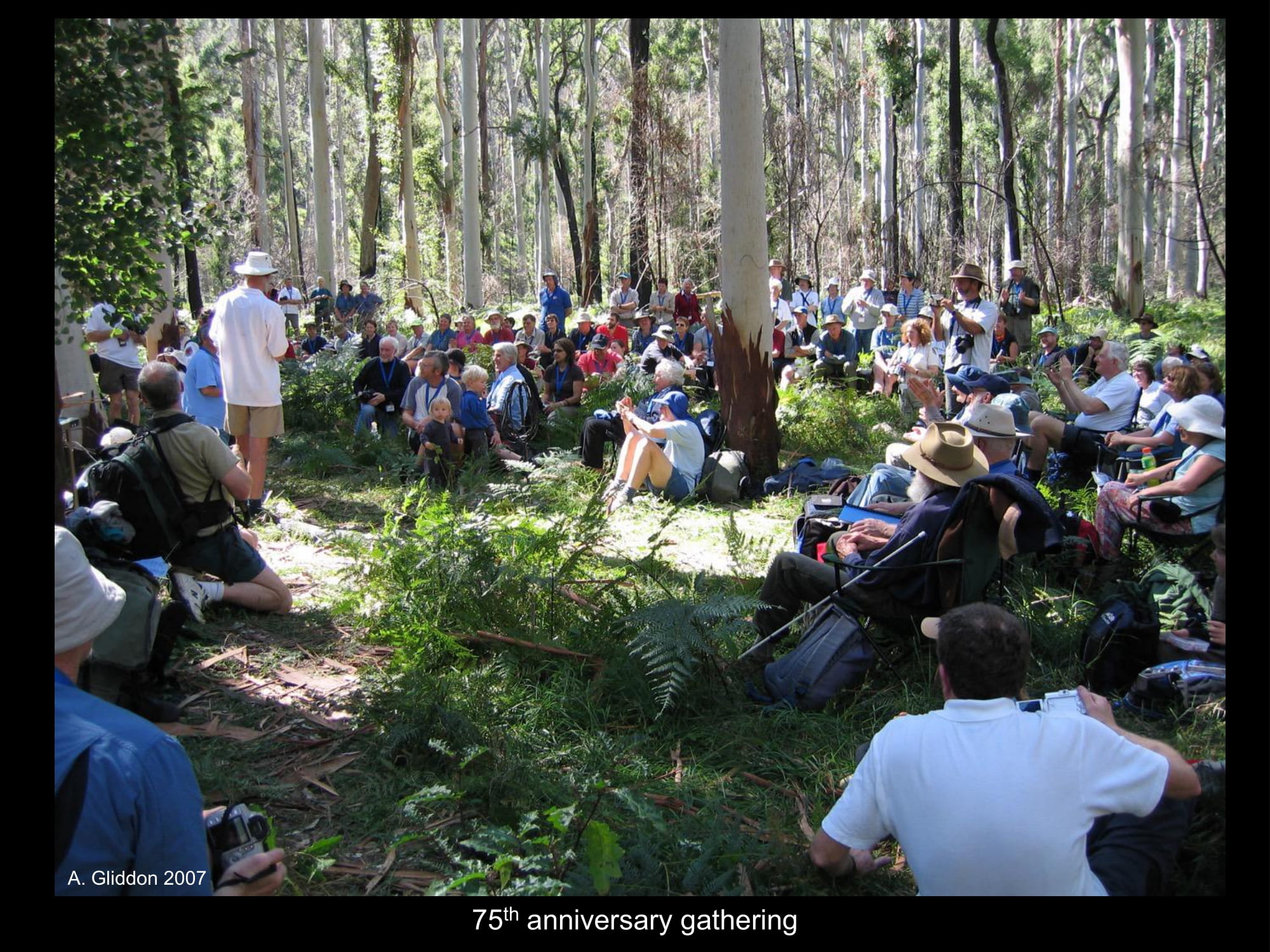
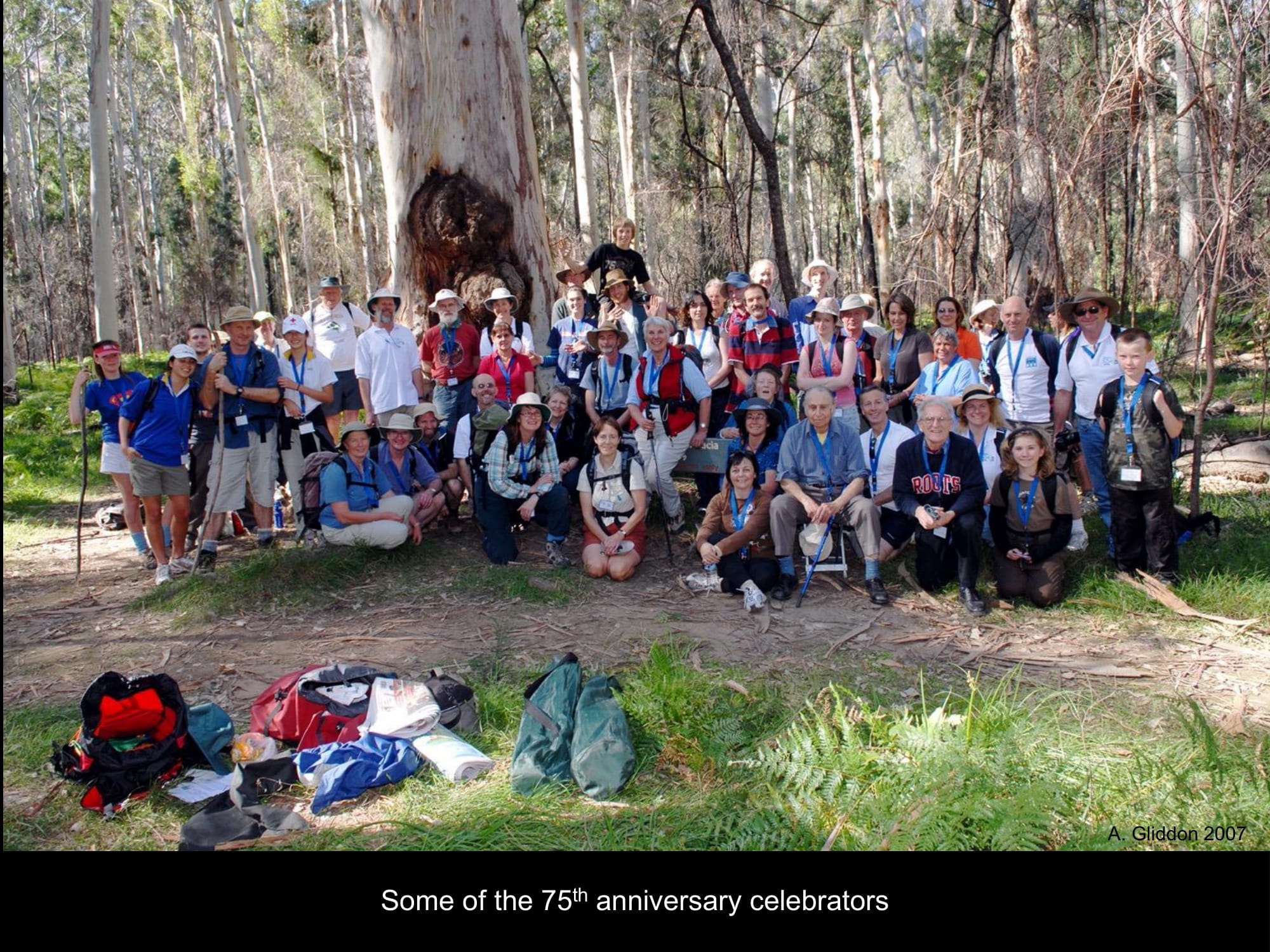
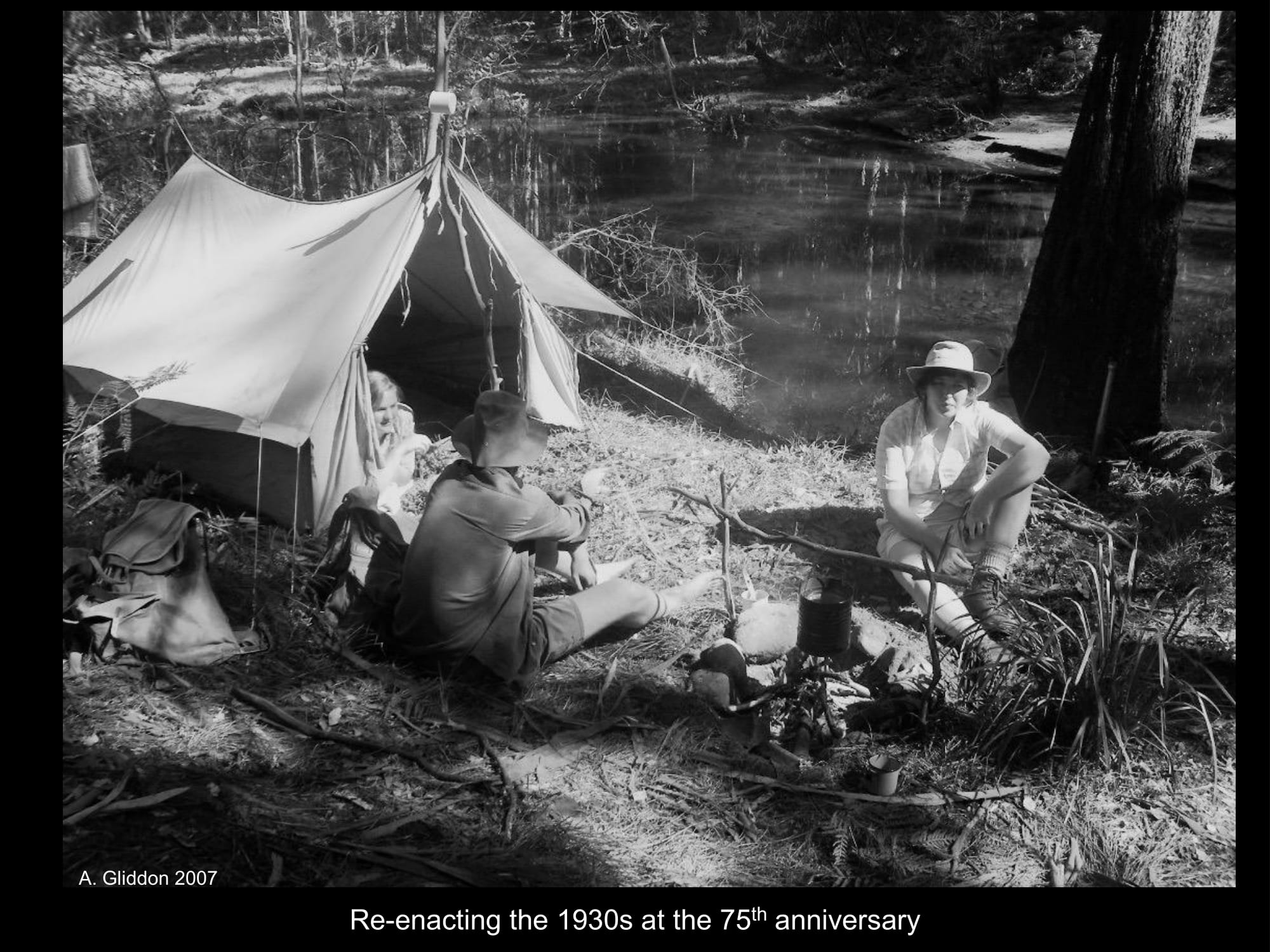
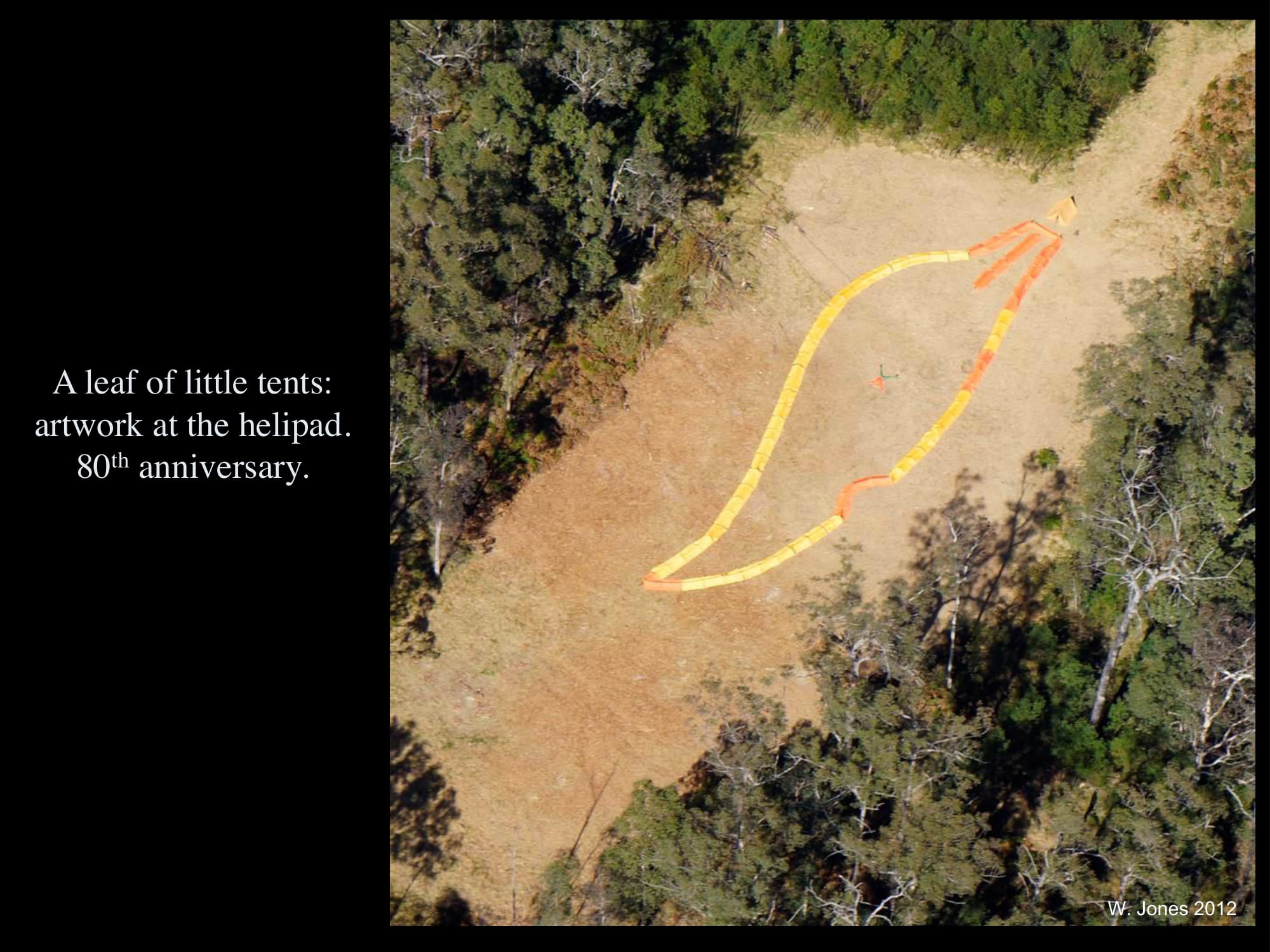
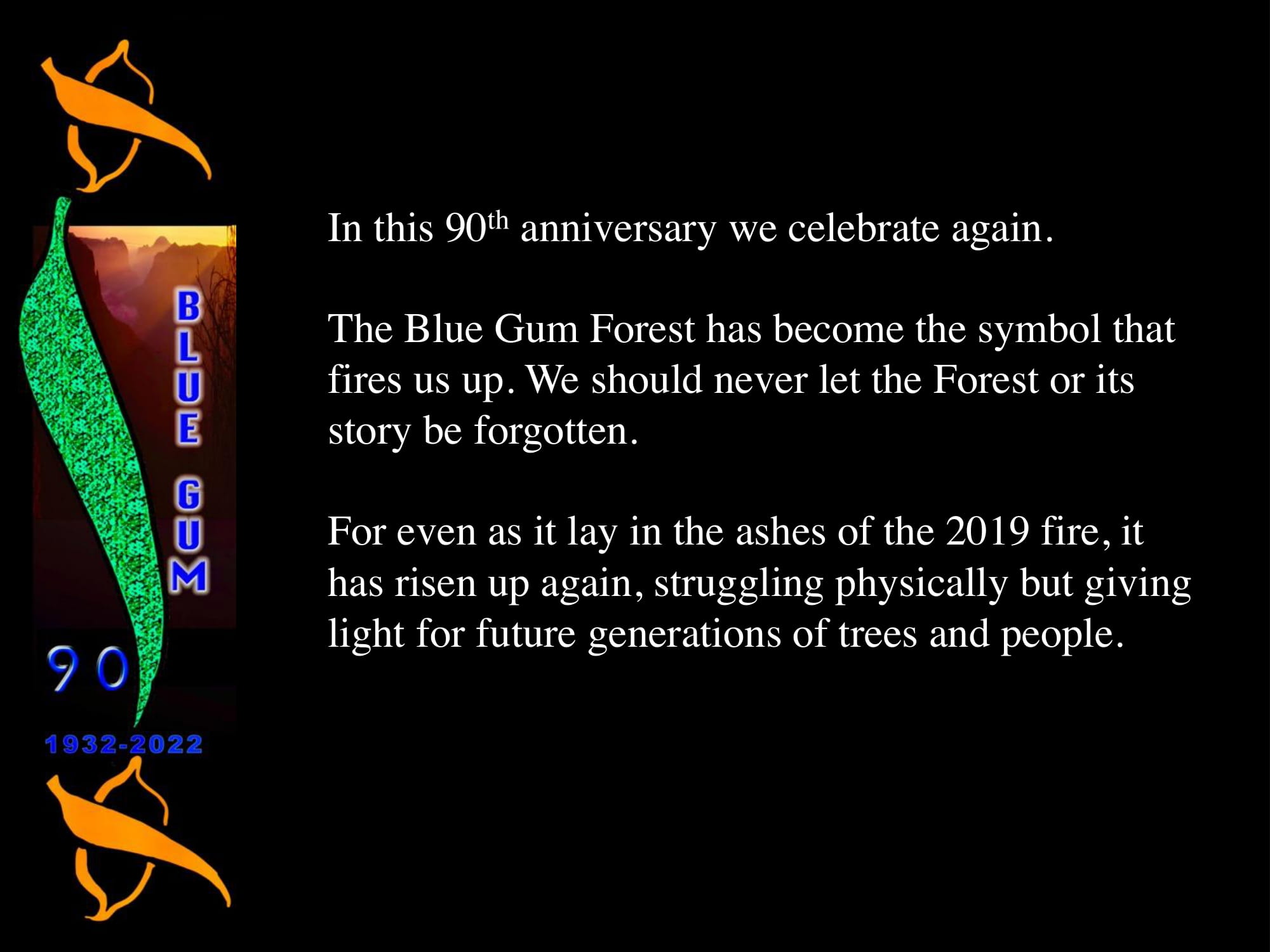
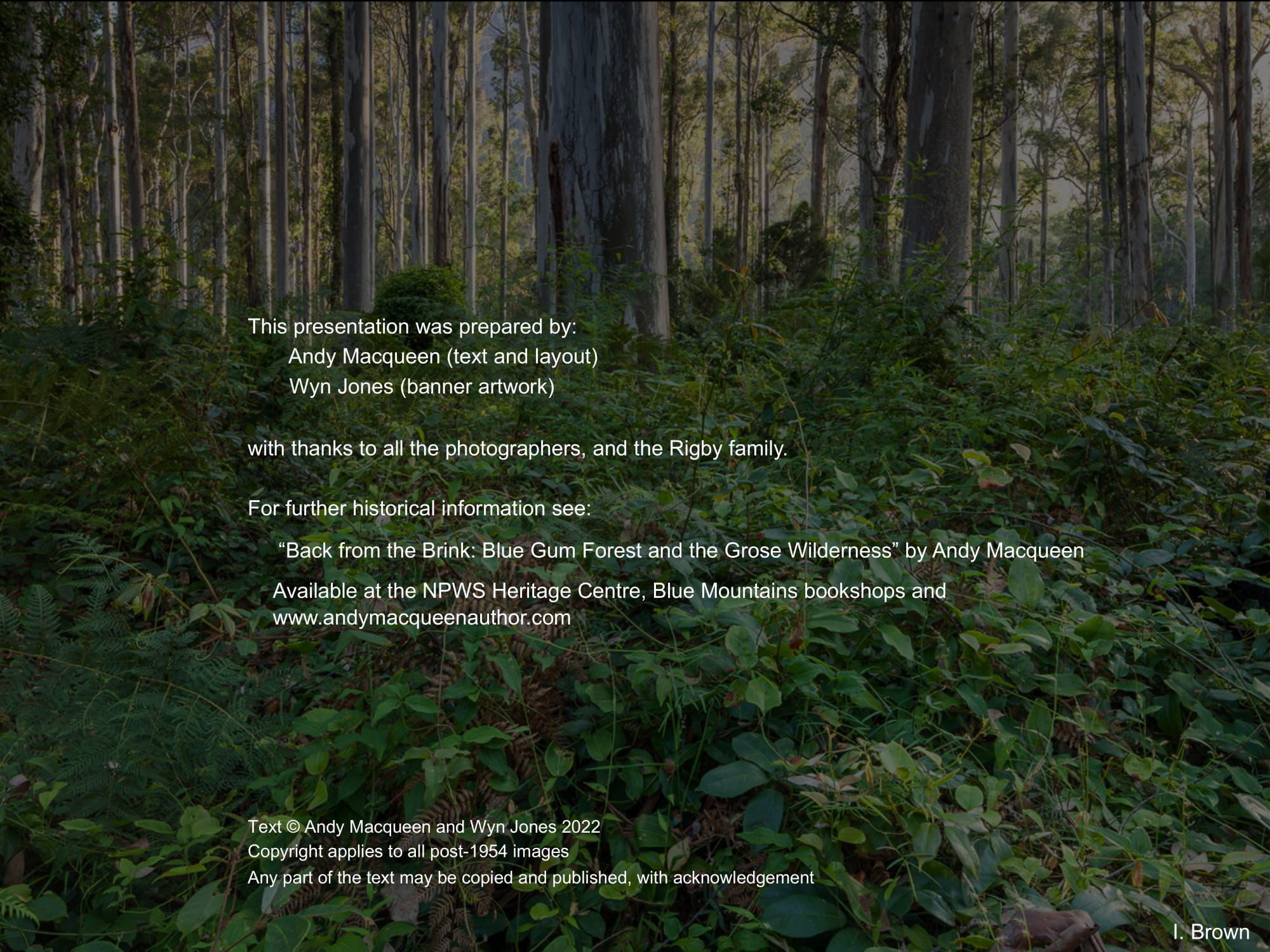
More details in "Back from the Brink: Blue Gum Forest and the Grose Wilderness” by Andy Macqueen, available from Blue Mountains bookshops and www.andymacqueenauthor.com